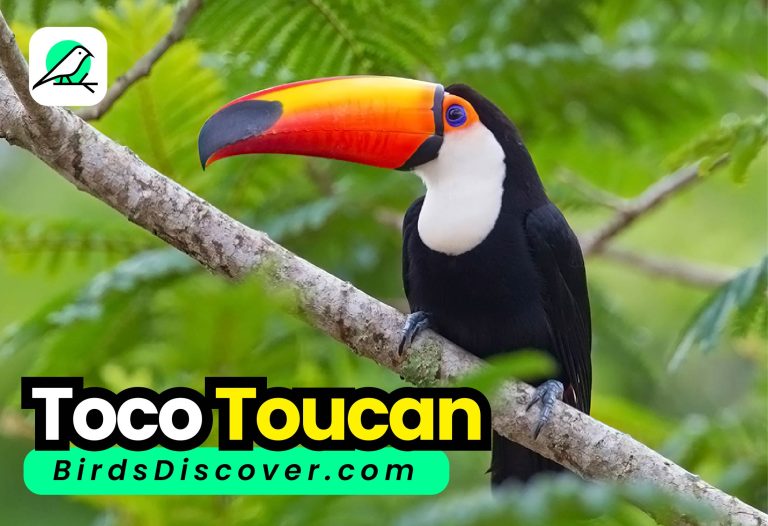46 Stunning White Birds: Sounds, Biographies, and Pictures
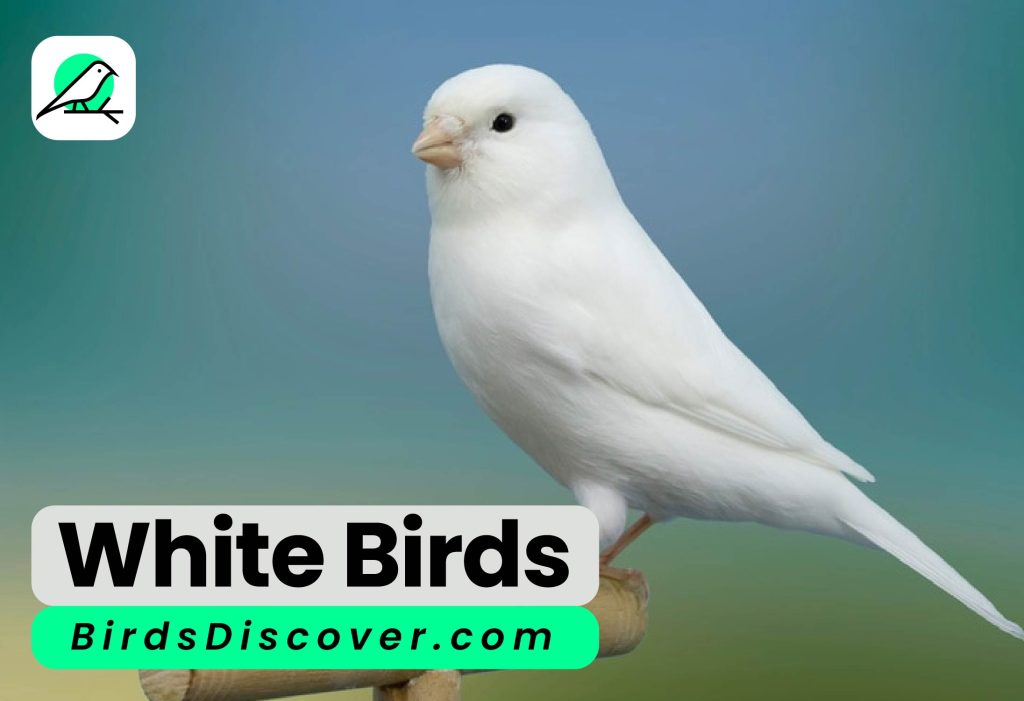
White Birds
White birds, often revered for their purity and grace, hold profound symbolic significance across cultures. Their striking white plumage typically represents purity, peace, and spiritual enlightenment. In many traditions, white birds are seen as messengers from the divine, symbolizing a connection between the earthly realm and the spiritual world. They frequently appear in contexts of transformation and renewal, embodying a sense of fresh beginnings or the cleansing of past burdens. In religious iconography, such as Christianity, white doves are emblematic of the Holy Spirit and divine peace. Additionally, white birds often signify hope and the promise of new opportunities, reflecting a serene and optimistic outlook on life. Encountering a white bird can be interpreted as a positive omen or a reminder to embrace inner purity and harmony.
White Bird Biography, Sound
| Aspect | Details |
|---|---|
| Symbolism | Purity: White birds often symbolize purity and innocence. Peace: Represent peace and tranquility. Spiritual Enlightenment: Associated with divine messages and spiritual connection. |
| Cultural Significance | Christianity: White doves are symbols of the Holy Spirit and divine peace. Native American Traditions: White birds can represent spiritual messengers and guidance. Hinduism: White birds are sometimes seen as symbols of purity and auspiciousness. |
| Common Species | Dove: Symbolizes peace and love. Swan: Represents grace, transformation, and beauty. White Heron: Signifies purity and spiritual growth. |
| Appearances in Art | Religious Iconography: Often depicted in spiritual and religious artworks. Literature and Mythology: Featured in stories and myths as messengers or symbols of hope and renewal. |
| Modern Symbolism | Hope: Seen as an omen of hope and new beginnings. Inner Peace: Represents personal and emotional tranquility. Renewal: Associated with transformation and fresh starts. |
| Personal Interpretation | Encountering a white bird can be interpreted as a positive sign, encouraging introspection, purity, and optimism. |
White Bird Habitat
White birds, such as doves, swans, and herons, inhabit a variety of environments based on their species. Here’s a look at their typical habitats:
- White Doves (e.g., Mourning Dove, White-winged Dove)
- Habitat: White doves are commonly found in diverse environments, including woodlands, urban areas, and agricultural lands. They prefer areas with abundant vegetation and access to water.
- Distribution: They are widespread in North and South America, and some species also range into Europe and Asia.
- Swans (e.g., Mute Swan, Whooper Swan)
- Habitat: Swans thrive in freshwater lakes, rivers, and marshes. They require large, open water bodies with plenty of vegetation for feeding and nesting.
- Distribution: Swans are found across Europe, Asia, and North America, with some species residing in southern Australia and New Zealand.
- White Herons (e.g., Great Egret, Snowy Egret)
- Habitat: White herons inhabit wetlands, including swamps, marshes, and estuaries. They are often seen near shallow waters where they can forage for fish and invertebrates.
- Distribution: These herons are widespread, found in North and South America, Europe, Africa, and parts of Asia.
In general, white birds are adaptable and can be found in both natural and human-modified landscapes, as long as their basic needs for food, water, and shelter are met.
Rock Ptarmigan
The Rock Ptarmigan (Lagopus muta) is a striking bird native to mountainous regions across the Northern Hemisphere, including the Arctic, Scandinavia, and the Scottish Highlands. Renowned for its remarkable adaptation to cold environments, it exhibits seasonal plumage changes that provide excellent camouflage against snowy landscapes. In winter, its feathers are pure white, blending seamlessly with the snow, while in summer, it sports a mottled brown and gray coloration that mimics the rocky terrain and tundra. The Rock Ptarmigan’s diet is primarily herbivorous, consisting of buds, leaves, and berries, though it may consume insects during the breeding season. It nests on the ground, often in a sheltered location among rocks or vegetation, and is known for its distinctive calls, which are integral to its mating rituals. This bird’s ability to thrive in harsh, frigid environments is a testament to its evolutionary adaptations and resilience.
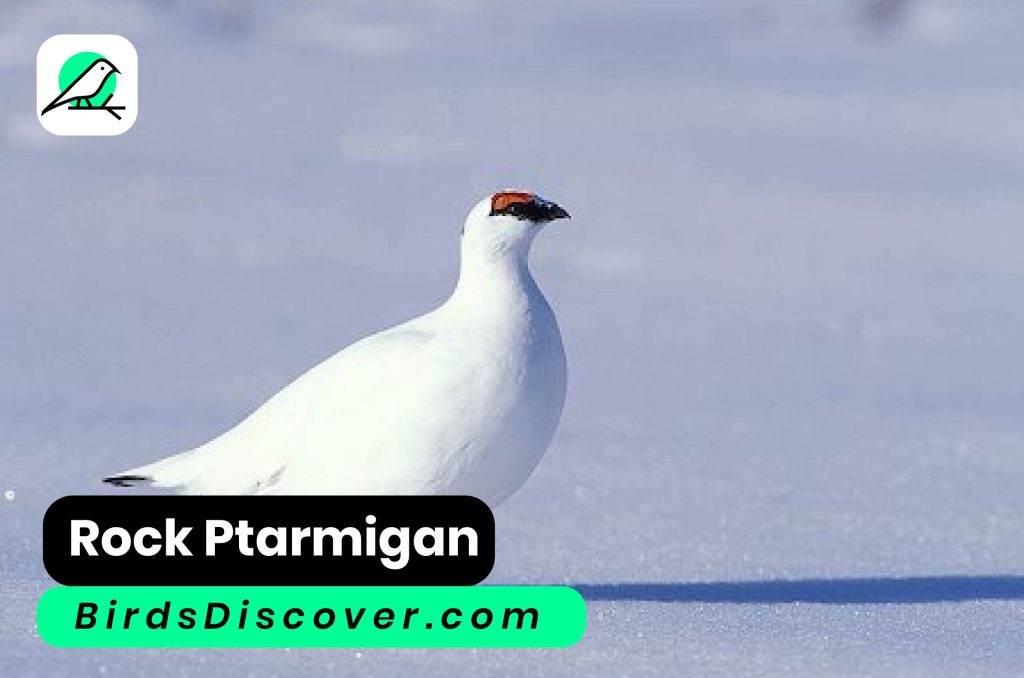
Rock Ptarmigan Biography, Sound
| Attribute | Details |
|---|---|
| Scientific Name | Lagopus muta |
| Common Names | Rock Ptarmigan, Mountain Ptarmigan |
| Family | Phasianidae |
| Habitat | Arctic tundra, mountainous regions, and rocky terrains |
| Geographical Range | Northern Hemisphere, including Arctic regions, Scandinavia, Scotland, and parts of North America |
| Physical Description | Seasonal plumage changes: white in winter, mottled brown and gray in summer |
| Diet | Primarily herbivorous: buds, leaves, berries; occasionally insects |
| Breeding | Nests on the ground in sheltered locations; uses camouflage for protection |
| Behavior | Known for distinctive calls during mating rituals; well-adapted to cold climates |
| Conservation Status | Least Concern (IUCN) |
| Special Adaptations | Camouflage plumage, ability to survive in extreme cold |
Cattle Egret
The Cattle Egret (Bubulcus ibis) is a strikingly adaptable bird native to the Old World but now found across many continents. Easily recognizable by its white plumage with distinctive yellow or orange tints during breeding season, the Cattle Egret often associates with large herbivores, such as cattle and buffalo. This symbiotic relationship is beneficial for both parties; as the egret picks parasites and ticks off the animals’ skin, it gets a steady food supply, while the livestock receives pest control. This behavior is a notable example of mutualism in nature. Cattle Egrets are highly adaptable, thriving in a variety of habitats from wetlands and grasslands to agricultural areas. Their ability to forage in diverse environments and their successful expansion into new regions highlight their resilience and versatility. Their presence is a testament to the intricate connections between wildlife and human-altered landscapes.
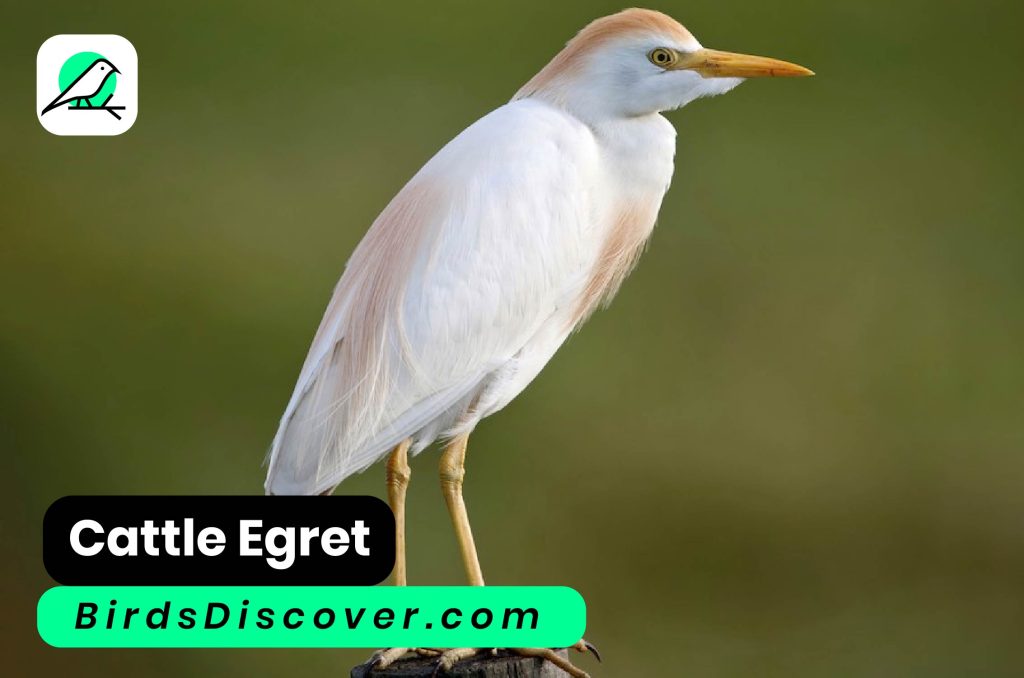
Cattle Egret Biography, Sound
| Aspect | Details |
|---|---|
| Scientific Name | Bubulcus ibis |
| Common Name | Cattle Egret |
| Family | Ardeidae |
| Order | Pelecaniformes |
| Distribution | Originally from the Old World (Africa, Europe, Asia), now widespread in the Americas, Australia, and other regions |
| Habitat | Grasslands, wetlands, agricultural fields, and areas with large herbivores |
| Physical Description | Small heron with white plumage; breeding adults have orange or yellow tints on head, neck, and back |
| Diet | Insects, ticks, and other parasites found on livestock; occasionally small fish and amphibians |
| Behavior | Often seen following large herbivores to feed on parasites; engages in mutualistic relationships |
| Breeding Season | Varies by region; typically during wet seasons or when food is abundant |
| Nesting | Builds nests in colonies, often in trees or shrubs |
| Conservation Status | Least Concern (IUCN Red List) |
| Interesting Fact | The Cattle Egret’s association with livestock is a notable example of mutualistic symbiosis |
American white Pelican
The American White Pelican (Pelecanus erythrorhynchos) is a majestic and large waterbird native to North America. Distinguished by its striking white plumage and a robust, orange bill with a prominent, elongated bill pouch, this pelican is a prominent figure in wetland ecosystems. These pelicans are known for their impressive wingspan, which can exceed 9 feet, and their graceful flight patterns, often seen soaring in V-shaped formations. Unlike other pelican species, the American White Pelican primarily feeds through cooperative hunting; groups of birds work together to herd fish into shallow waters where they can be easily scooped up using their large, scoop-like bills. During breeding season, they nest in colonies on isolated islands or sandbars, where both parents participate in caring for the young. Their seasonal migrations, spanning from their breeding grounds in the northern United States and Canada to their wintering sites in the southern U.S. and Mexico, underscore their adaptability and resilience in various habitats.

American white Pelican Biography, Sound
| Aspect | Details |
|---|---|
| Scientific Name | Pelecanus erythrorhynchos |
| Common Name | American White Pelican |
| Family | Pelecanidae |
| Order | Pelecaniformes |
| Distribution | North America, including the U.S., Canada, and Mexico; migrates to southern U.S. and Mexico for winter |
| Habitat | Wetlands, lakes, rivers, and coastal areas; nests on isolated islands and sandbars |
| Physical Description | Large white bird with a wingspan up to 9 feet; orange bill with a distinctive bill pouch |
| Diet | Primarily fish; feeds cooperatively with other pelicans in shallow waters |
| Behavior | Migratory; nests in colonies; known for soaring flight and cooperative fishing techniques |
| Breeding Season | Late spring to early summer; breeding grounds are in northern U.S. and Canada |
| Nesting | Builds nests on bare ground in colonies on islands or sandbars |
| Conservation Status | Least Concern (IUCN Red List) |
| Interesting Fact | Uses a cooperative hunting strategy where groups of pelicans herd fish into shallow areas for easier capture |
White ibis
The White Ibis (Eudocimus albus) is a striking wader bird native to the southeastern United States, Central America, and northern South America. With its distinctive pure white plumage and bright red legs and bill, it is easily recognizable and adds a splash of color to its wetland habitats. This medium-sized bird thrives in a variety of wetlands, including marshes, swamps, and mangroves, where it forages for a diet primarily consisting of insects, crustaceans, and small fish. White Ibises use their long, curved bills to probe mud and shallow water for food. During breeding season, they gather in noisy, conspicuous colonies often in trees or shrubs, where they build nests and care for their young. Their striking appearance and elaborate foraging techniques make the White Ibis a captivating species and an important indicator of the health of wetland ecosystems.
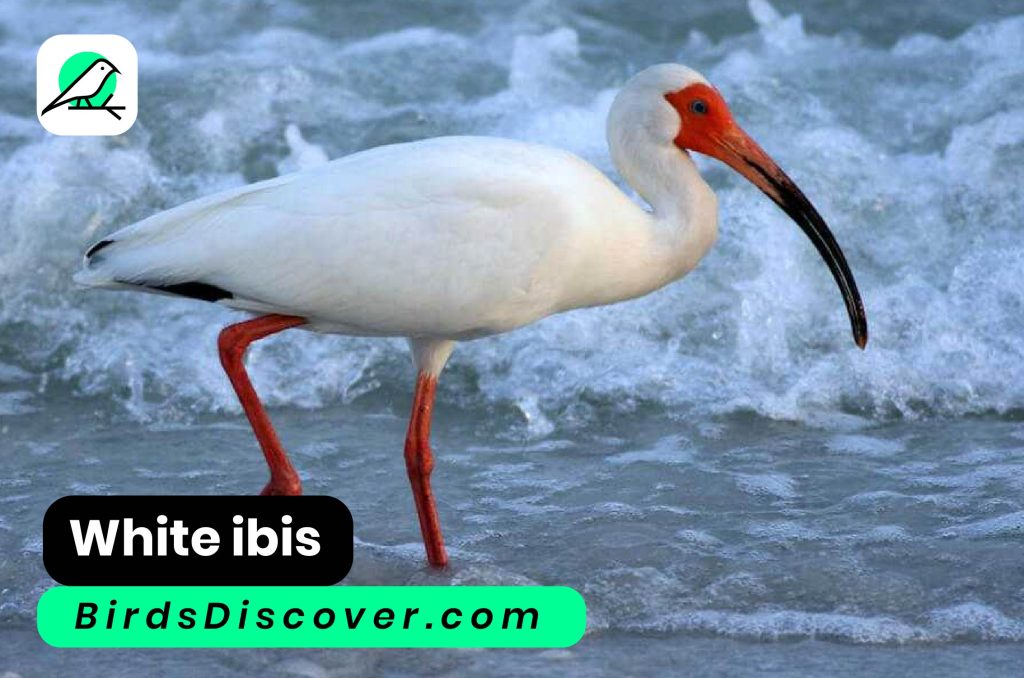
White ibis Biography, Sound
| Aspect | Details |
|---|---|
| Scientific Name | Eudocimus albus |
| Common Name | White Ibis |
| Family | Threskiornithidae |
| Order | Pelecaniformes |
| Distribution | Southeastern United States, Central America, northern South America |
| Habitat | Wetlands, including marshes, swamps, mangroves, and estuaries |
| Physical Description | Medium-sized wader with pure white plumage; bright red legs and bill; long, curved bill |
| Diet | Insects, crustaceans, small fish; forages by probing mud and shallow water |
| Behavior | Social; often seen in flocks; nests in noisy, conspicuous colonies in trees or shrubs |
| Breeding Season | Typically during the warmer months; varies by region |
| Nesting | Builds nests in colonies; nests are usually in trees or shrubs near water |
| Conservation Status | Least Concern (IUCN Red List) |
| Interesting Fact | Known for its elaborate foraging technique and role as an indicator of wetland health |
Great Egret
The Great Egret (Ardea alba) is a strikingly elegant bird known for its pure white plumage, long legs, and distinctive S-shaped neck. This large wader is found across a broad range, from North and Central America to Europe, Africa, and Asia. Great Egrets thrive in diverse wetland habitats, including marshes, swamps, and coastal estuaries, where they hunt for fish, amphibians, and insects. Their hunting technique involves standing still and waiting for prey, or slowly stalking through shallow waters with their sharp bills poised. During the breeding season, Great Egrets are particularly notable for their elaborate courtship displays and the dramatic plumage they develop, which includes long, flowing feathers called aigrettes. These feathers were once highly sought after for fashion, leading to significant conservation efforts to protect the species. Today, the Great Egret is celebrated for its beauty and ecological role as an indicator of wetland health.
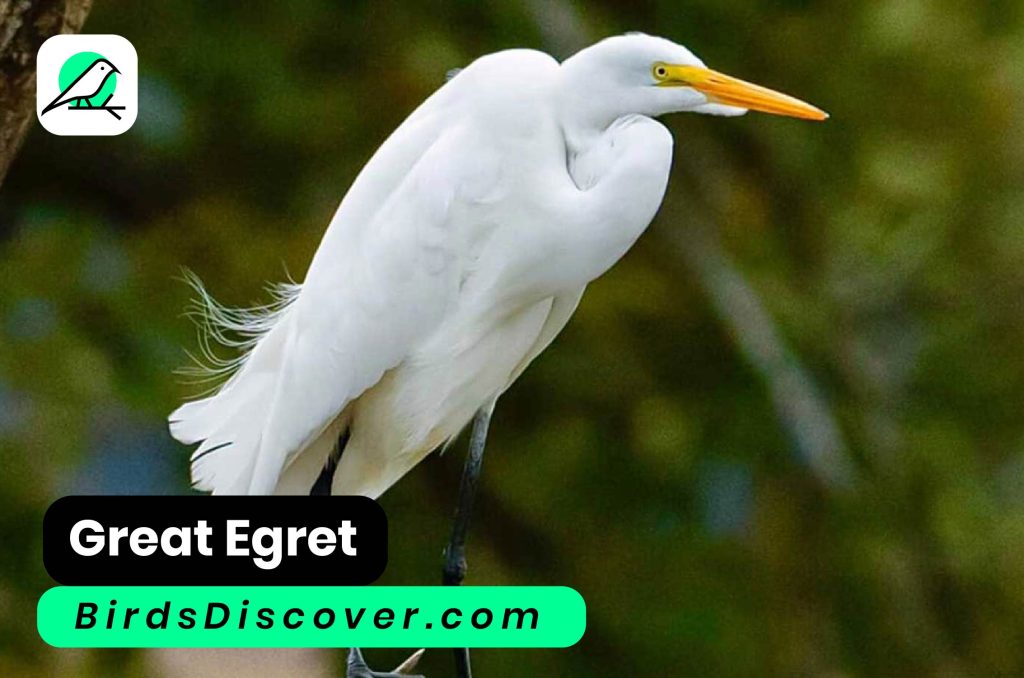
Great Egret Biography, Sound
| Aspect | Details |
|---|---|
| Scientific Name | Ardea alba |
| Common Name | Great Egret |
| Family | Ardeidae |
| Order | Pelecaniformes |
| Distribution | Found across North and Central America, Europe, Africa, and Asia |
| Habitat | Wetlands, including marshes, swamps, estuaries, and shallow coastal waters |
| Physical Description | Large bird with all-white plumage, long legs, and an S-shaped neck; sharp, yellow bill |
| Diet | Fish, amphibians, insects; hunts by standing still or slowly stalking in shallow water |
| Behavior | Solitary or found in small groups; performs elaborate courtship displays during breeding season |
| Breeding Season | Typically spring to summer; varies by region |
| Nesting | Builds nests in trees or shrubs, often in colonies |
| Conservation Status | Least Concern (IUCN Red List) |
| Interesting Fact | Historically targeted for their beautiful feathers, leading to significant conservation efforts |
Trumpeter Swan
The Trumpeter Swan (Cygnus buccinator) is North America’s largest native swan and a symbol of grace and strength. Renowned for its impressive size, with wingspans reaching up to 10 feet, it boasts striking white plumage and a distinctive black bill with a subtle orange hue. Named for its trumpet-like call, this swan is commonly found in the wetlands, lakes, and rivers of the northern United States and Canada. Trumpeter Swans are known for their strong pair bonds and elaborate courtship displays, which involve synchronized swimming and vocalizations. They feed primarily on aquatic vegetation, such as sedges and grasses, which they obtain by tipping their heads underwater. During the breeding season, they build large nests near water, where both parents share the responsibility of incubating eggs and rearing cygnets. Conservation efforts have helped their numbers recover from near extinction in the early 20th century, highlighting their resilience and the success of targeted wildlife protection.
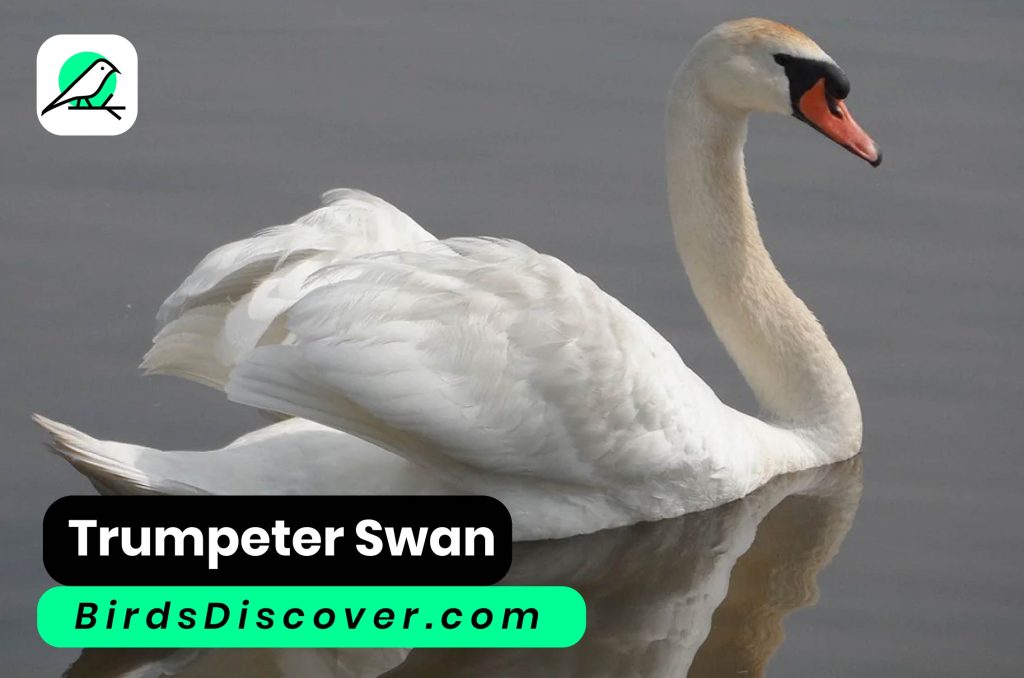
Trumpeter Swan Biography, Sound
| Aspect | Details |
|---|---|
| Scientific Name | Cygnus buccinator |
| Common Name | Trumpeter Swan |
| Family | Anatidae |
| Order | Anseriformes |
| Distribution | Northern United States, Canada, and parts of Alaska |
| Habitat | Lakes, rivers, and wetlands; prefers large, shallow bodies of water |
| Physical Description | Largest native swan in North America; all-white plumage; black bill with orange accents; wingspan up to 10 feet |
| Diet | Aquatic vegetation such as sedges and grasses; forages by tipping its head underwater |
| Behavior | Known for strong pair bonds and elaborate courtship displays; migratory in some regions |
| Breeding Season | Late spring to early summer; nests near water |
| Nesting | Builds large nests from reeds and grasses; both parents incubate eggs and care for cygnets |
| Conservation Status | Least Concern (IUCN Red List); populations have recovered significantly due to conservation efforts |
| Interesting Fact | Named for its distinctive trumpet-like call and once faced near extinction due to hunting and habitat loss |
Tundra Swan
The Tundra Swan (Cygnus columbianus) is a strikingly elegant bird that inhabits the northern regions of North America and Eurasia. Slightly smaller than the Trumpeter Swan, it features a predominantly white plumage with a unique yellow patch at the base of its bill, which distinguishes it from other swan species. Tundra Swans are migratory, traveling between their breeding grounds in the Arctic tundra and their wintering habitats in temperate regions, such as the northern United States and parts of East Asia. They are known for their strong family bonds, with pairs often remaining together for life and both parents sharing the responsibility of nesting and raising their young. Tundra Swans feed on aquatic vegetation and are commonly seen in wetlands, estuaries, and lakes. Their graceful presence and remarkable migratory journey underscore their role as an emblem of the wild, northern landscapes they inhabit.
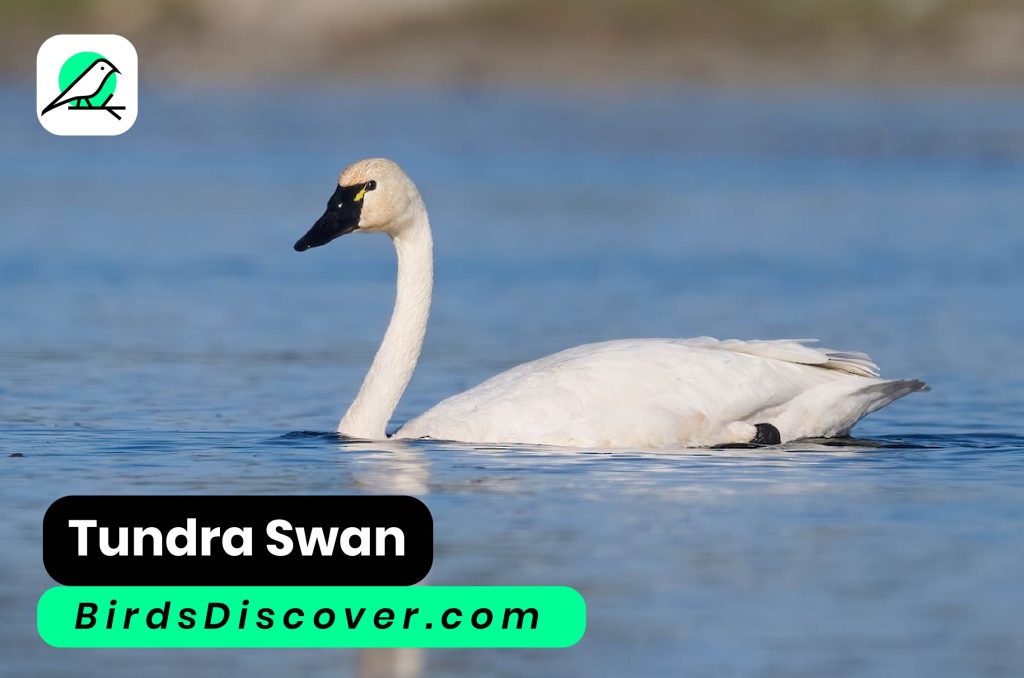
Tundra Swan Biography, Sound
| Aspect | Details |
|---|---|
| Scientific Name | Cygnus columbianus |
| Common Name | Tundra Swan |
| Family | Anatidae |
| Order | Anseriformes |
| Distribution | Breeds in Arctic tundra of North America and Eurasia; migrates to temperate regions, including northern U.S. and East Asia |
| Habitat | Tundra, wetlands, lakes, and estuaries; prefers shallow, vegetated water bodies |
| Physical Description | Medium-sized swan with all-white plumage; distinctive yellow patch at the base of the bill; smaller than the Trumpeter Swan |
| Diet | Aquatic vegetation, including roots and stems of plants; forages by tipping head underwater |
| Behavior | Migratory; known for strong pair bonds and shared parenting duties |
| Breeding Season | Late spring to summer; nests in the Arctic tundra |
| Nesting | Builds nests on the ground near water; both parents incubate eggs and care for cygnets |
| Conservation Status | Least Concern (IUCN Red List) |
| Interesting Fact | The Tundra Swan’s migration involves long journeys between breeding and wintering grounds; distinctive call and appearance make it easily recognizable |
Snowy Owl
The Snowy Owl (Bubo scandiacus) is an iconic and striking bird of the Arctic, renowned for its pure white plumage and piercing yellow eyes. Native to the tundra regions of North America and Eurasia, this large owl is well adapted to its cold, harsh environment with its thick feathering that provides excellent insulation. Snowy Owls are powerful hunters, preying primarily on small mammals such as lemmings and voles, though they will also hunt birds. They are unique among owls for their daytime hunting habits, which is an adaptation to the continuous daylight of the Arctic summer. During the winter, they may migrate southward in search of food. Snowy Owls are known for their distinctive, hooting call and their impressive, silent flight. Despite their majestic appearance, they face threats from habitat loss and climate change, which affect their tundra ecosystems and prey availability.
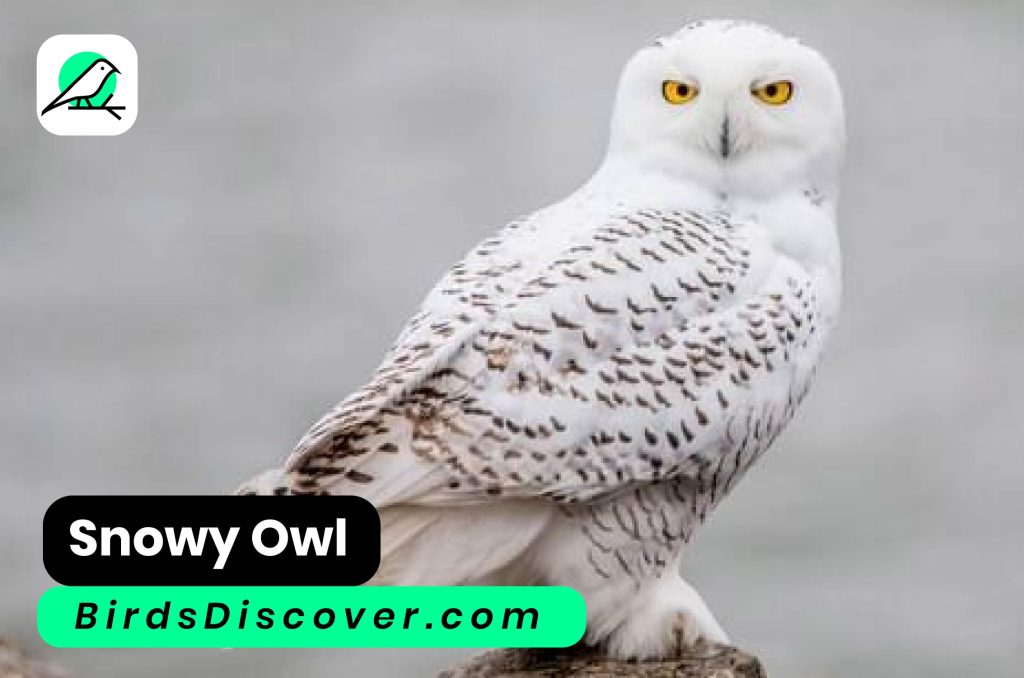
Snowy Owl Biography, Sound
| Aspect | Details |
|---|---|
| Scientific Name | Bubo scandiacus |
| Common Name | Snowy Owl |
| Family | Strigidae |
| Order | Strigiformes |
| Distribution | Arctic regions of North America and Eurasia; migrates southward in winter as needed |
| Habitat | Tundra, open plains, and occasionally coastal areas; prefers areas with open terrain and minimal vegetation |
| Physical Description | Large, predominantly white owl with black or dark brown markings; yellow eyes; broad wingspan |
| Diet | Primarily small mammals such as lemmings and voles; occasionally birds |
| Behavior | Diurnal and nocturnal hunting; known for its silent flight and powerful predatory skills |
| Breeding Season | Late spring to summer; nests on the ground in the Arctic tundra |
| Nesting | Builds nests on the ground; both parents are involved in raising the young |
| Conservation Status | Least Concern (IUCN Red List) |
| Interesting Fact | Snowy Owls are known for their striking appearance and adaptation to extreme Arctic conditions; migration patterns can vary based on food availability |
Snow Bunting
The Snow Bunting (Plectrophenax nivalis) is a small, hardy passerine bird renowned for its striking winter plumage and adaptability to harsh Arctic conditions. Breeding in the high Arctic tundra of North America, Europe, and Asia, the Snow Bunting is one of the few songbirds that thrive in these extreme environments. During the breeding season, males sport a vivid combination of black, white, and chestnut feathers, which transition to a more subdued, mottled brown and white plumage in winter. These changes provide effective camouflage against the snowy landscape. Snow Buntings are ground foragers, primarily feeding on seeds and insects, and are known for their remarkable migratory behavior, traveling south to more temperate regions during the winter months. Their energetic, cheerful song and striking appearance make them a favorite among bird watchers, and their resilience is a testament to their ability to thrive in one of Earth’s most challenging habitats.

Snow Bunting Biography, Sound
| Aspect | Details |
|---|---|
| Scientific Name | Plectrophenax nivalis |
| Common Name | Snow Bunting |
| Family | Calcariidae |
| Order | Passeriformes |
| Distribution | Breeds in the Arctic tundra of North America, Europe, and Asia; migrates to temperate regions for winter |
| Habitat | Arctic tundra during breeding season; grasslands, fields, and agricultural areas during winter |
| Physical Description | Small bird; males have striking black, white, and chestnut plumage in summer, transitioning to brown and white in winter |
| Diet | Seeds, insects, and other small invertebrates |
| Behavior | Ground forager; migratory; known for its cheerful song and social behavior in flocks |
| Breeding Season | Late spring to summer; nests in the ground or low vegetation |
| Nesting | Builds nests on the ground or in low vegetation; both parents care for the young |
| Conservation Status | Least Concern (IUCN Red List) |
| Interesting Fact | Snow Buntings are known for their adaptability to extreme Arctic conditions and their dramatic seasonal plumage changes |
Snowy Egret
The Snowy Egret (Egretta thula) is a small, elegant wader renowned for its striking appearance and graceful behavior. Found throughout the Americas, from the southeastern United States to Argentina, this bird is easily recognizable by its pure white plumage, slender black legs, and bright yellow feet. During the breeding season, Snowy Egrets develop long, wispy plumes that adorn their necks and backs, adding to their ethereal beauty. They inhabit a range of wetland environments, including marshes, swamps, and mangroves, where they hunt for small fish, amphibians, and invertebrates. The Snowy Egret uses its sharp bill to snatch prey from shallow waters, often employing a distinctive feeding technique of rapidly moving its feet to stir up the mud. Their striking appearance and dynamic hunting style make them a captivating subject for birdwatchers, and their adaptable nature allows them to thrive in a variety of wetland habitats.
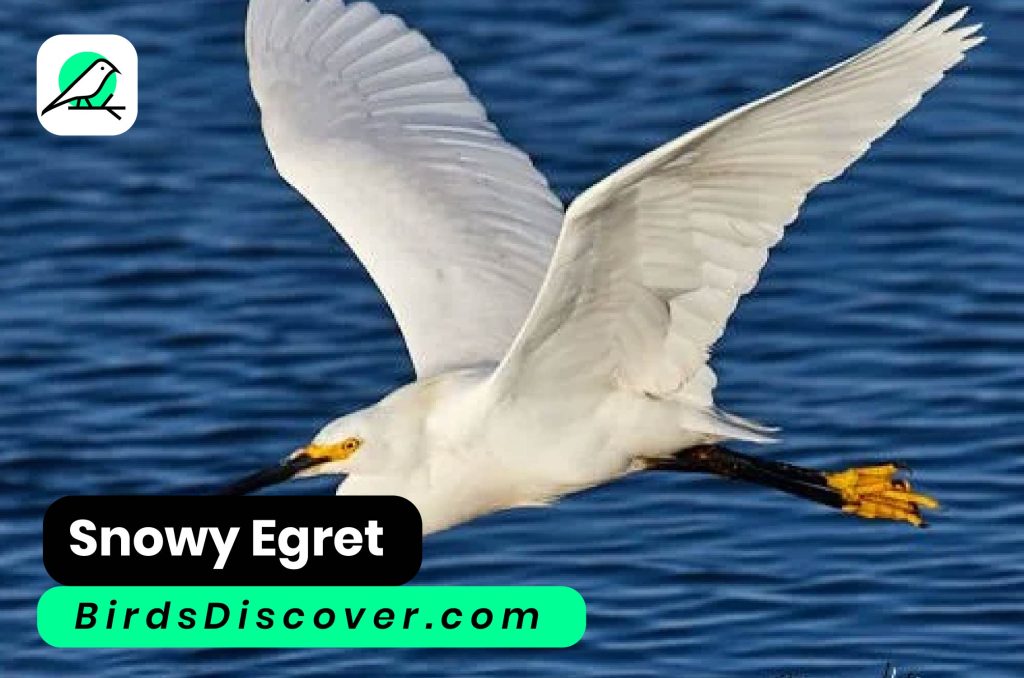
Snowy Egret Biography, Sound
| Aspect | Details |
|---|---|
| Scientific Name | Egretta thula |
| Common Name | Snowy Egret |
| Family | Ardeidae |
| Order | Pelecaniformes |
| Distribution | The Americas, from the southeastern United States to Argentina |
| Habitat | Wetlands, including marshes, swamps, mangroves, and shallow coastal areas |
| Physical Description | Small wader with pure white plumage; slender black legs; bright yellow feet; long breeding plumes |
| Diet | Small fish, amphibians, and invertebrates; hunts by using its bill to snatch prey from shallow water |
| Behavior | Forages by moving its feet to stir up mud; known for graceful flight and elaborate courtship displays |
| Breeding Season | Typically spring to summer; varies by region |
| Nesting | Builds nests in trees or shrubs; both parents care for the young |
| Conservation Status | Least Concern (IUCN Red List) |
| Interesting Fact | The Snowy Egret’s bright yellow feet and elegant plumes make it a striking presence in wetland habitats |
Ivory Gull
The Ivory Gull (Pagophila eburnea) is a striking and rare seabird native to the Arctic regions of the Northern Hemisphere. Its pristine white plumage and distinctive black legs and bill set it apart from other gull species, giving it a distinctive and elegant appearance. This seabird is highly adapted to life in the ice-covered Arctic, where it relies on sea ice and ice floes for foraging and nesting. The Ivory Gull primarily feeds on fish, small invertebrates, and carrion, often scavenging from the kills of polar bears and seals. It nests on remote, ice-covered cliffs, making its breeding sites difficult to access and study. Due to its reliance on sea ice, the Ivory Gull is particularly vulnerable to climate change, which affects the stability of its icy habitat. Conservation efforts are crucial to ensuring the survival of this iconic Arctic bird amidst shifting environmental conditions.
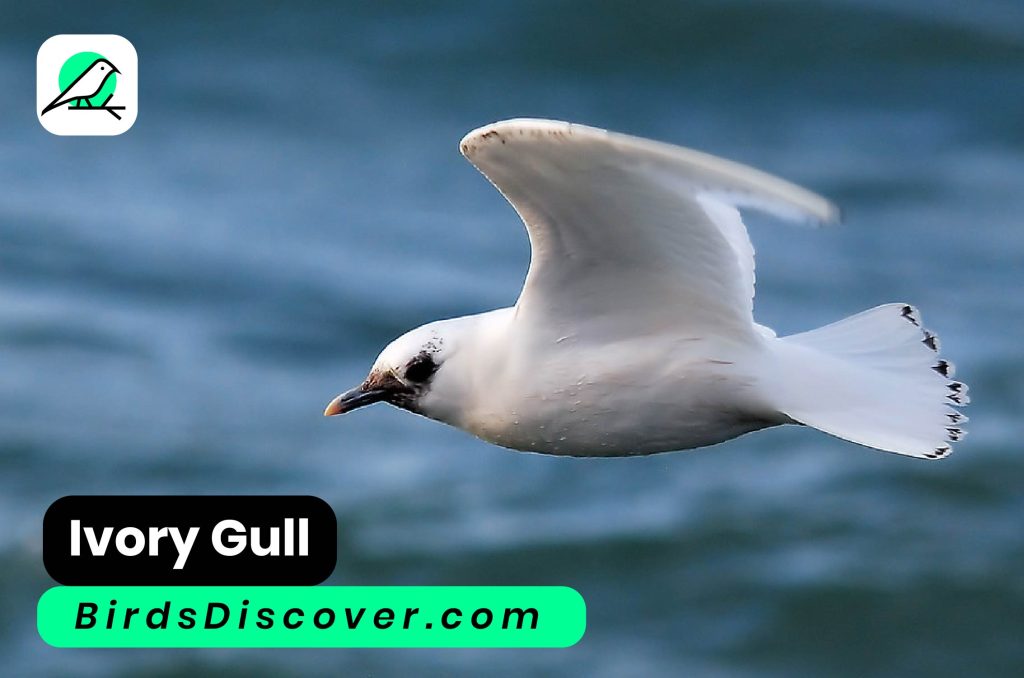
Ivory Gull Biography, Sound
| Aspect | Details |
|---|---|
| Scientific Name | Pagophila eburnea |
| Common Name | Ivory Gull |
| Family | Laridae |
| Order | Charadriiformes |
| Distribution | Arctic regions of the Northern Hemisphere, including parts of the Arctic Ocean and surrounding sea ice |
| Habitat | Sea ice, ice floes, and remote Arctic cliffs; nests on ice-covered cliffs and glaciers |
| Physical Description | All-white plumage with black legs and bill; small, delicate appearance |
| Diet | Fish, small invertebrates, and carrion; scavenges from polar bear and seal kills |
| Behavior | Forages primarily on ice; nests in remote and inaccessible areas; migratory within the Arctic |
| Breeding Season | Spring to early summer; nests in small colonies on ice-covered cliffs |
| Nesting | Builds nests on remote, ice-covered cliffs; often in proximity to polar bear and seal kills |
| Conservation Status | Near Threatened (IUCN Red List); vulnerable to climate change affecting sea ice habitat |
| Interesting Fact | Its reliance on sea ice makes it particularly sensitive to climate change and environmental shifts |
White tern
The White Tern (Gygis alba), also known as the Fairy Tern, is a strikingly beautiful seabird found across the tropical and subtropical regions of the Indian and Pacific Oceans. Renowned for its immaculate white plumage and slender body, the White Tern is often seen gliding gracefully over coral reefs and tropical forests. Its streamlined form and long, pointed wings are perfectly adapted for its aerial lifestyle, allowing it to effortlessly patrol its coastal and island habitats. Unlike many seabirds, White Terns are notable for their unique nesting behavior; they lay their eggs on bare branches or even on the ground, without building a traditional nest, relying on their precise, agile flight to protect their young. These birds primarily feed on small fish and squid, which they catch while flying over the water. The White Tern’s delicate appearance and distinctive nesting habits make it a captivating subject for bird enthusiasts and an essential part of its tropical ecosystem.
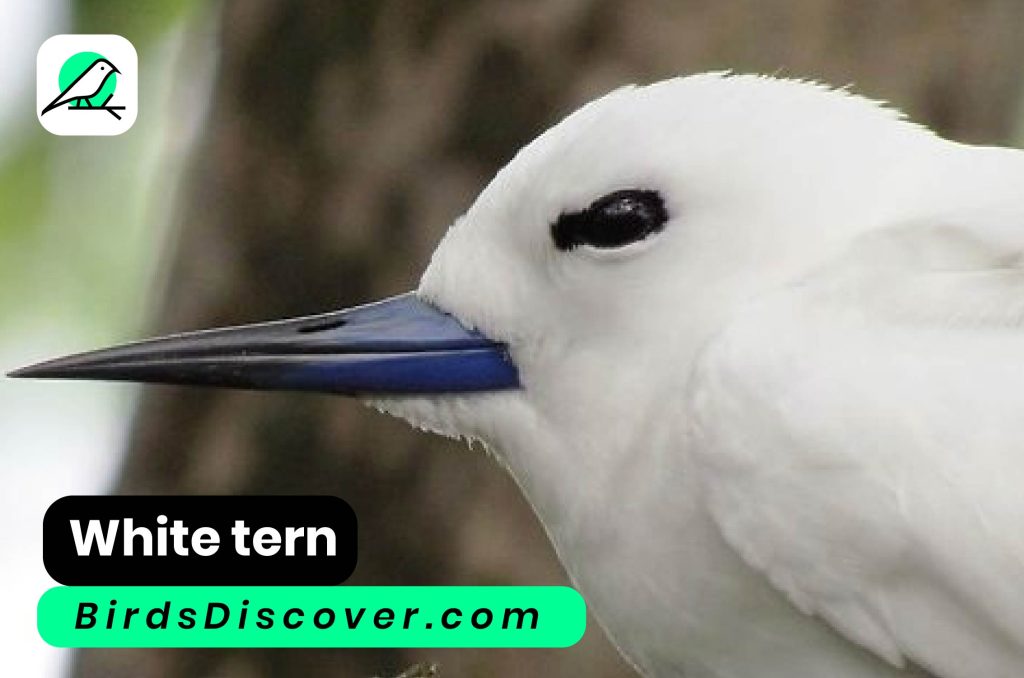
White tern Biography, Sound
| Aspect | Details |
|---|---|
| Scientific Name | Gygis alba |
| Common Name | White Tern (also known as Fairy Tern) |
| Family | Sternidae |
| Order | Charadriiformes |
| Distribution | Tropical and subtropical Indian and Pacific Oceans, including islands and coastal areas |
| Habitat | Coastal regions, coral reefs, and tropical forests; nests in trees or on bare branches |
| Physical Description | All-white plumage; slender body with long, pointed wings; black eyes and bill |
| Diet | Small fish, squid; catches prey while flying over water |
| Behavior | Unique nesting behavior; lays eggs on bare branches or ground without building traditional nests |
| Breeding Season | Varies by region; generally during warmer months |
| Nesting | Eggs are laid on bare branches or the ground; both parents care for the young |
| Conservation Status | Least Concern (IUCN Red List) |
| Interesting Fact | Known for its graceful, agile flight and unique nesting habits; relies on precise flight to protect eggs and chicks |
Whooping Crane
The Whooping Crane (Grus americana) is a majestic and iconic bird native to North America, renowned for its striking white plumage and impressive stature. Standing at nearly five feet tall with a wingspan of up to seven feet, it is one of the tallest and largest cranes in the world. With its distinctive red crown and long, slender legs, the Whooping Crane is easily identifiable and is known for its distinctive, trumpeting call that can be heard over long distances. Historically, the species faced near extinction due to habitat loss and hunting, but concerted conservation efforts have helped its numbers recover. Whooping Cranes breed in the wetlands of northern Canada and migrate to the coastal marshes of the southern United States for winter. Their migratory behavior and reliance on specific wetland habitats make them an important indicator species for wetland health and a symbol of successful wildlife conservation.
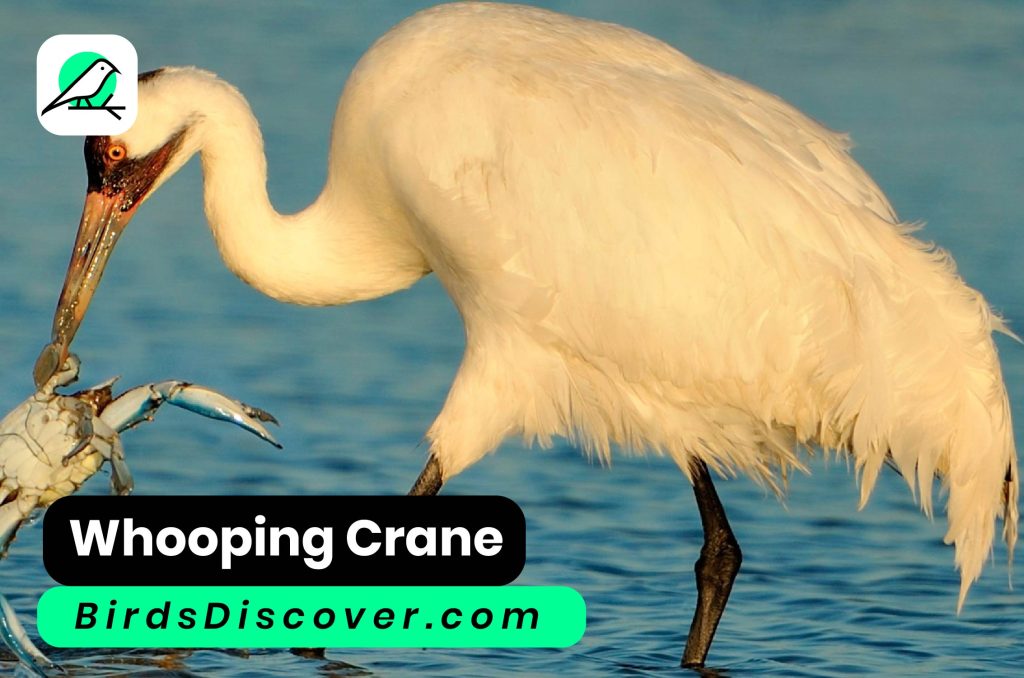
Whooping Crane Biography, Sound
| Aspect | Details |
|---|---|
| Scientific Name | Grus americana |
| Common Name | Whooping Crane |
| Family | Gruidae |
| Order | Gruiformes |
| Distribution | North America; breeds in Canada, migrates to the southern United States for winter |
| Habitat | Wetlands, marshes, and shallow lakes; breeds in northern wetlands and winters in coastal marshes |
| Physical Description | Large bird with all-white plumage, black wingtips, and a red crown; stands up to 5 feet tall with a wingspan of up to 7 feet |
| Diet | Primarily insects, small fish, amphibians, and plants; forages in shallow water and wetland areas |
| Behavior | Migratory; known for its distinctive trumpeting call and elaborate courtship displays; forms long-term pair bonds |
| Breeding Season | Spring to summer; nests in wetland areas in Canada |
| Nesting | Builds nests on the ground in wetlands; both parents share in incubation and care of the young |
| Conservation Status | Endangered (IUCN Red List); recovery efforts have improved population numbers |
| Interesting Fact | The Whooping Crane’s recovery from near extinction is a notable success story in wildlife conservation |
Snow Goose
The Snow Goose (Anser caerulescens) is a striking waterfowl native to North America, easily recognized by its white plumage and contrasting black wing tips. With its characteristic honking call and robust body, the Snow Goose is a familiar sight in wetlands and agricultural fields across its range. These geese are notable for their impressive migratory journeys, traveling thousands of miles between their breeding grounds in the Arctic tundra and their wintering habitats in the southern United States and Mexico. Snow Geese primarily feed on grains, seeds, and aquatic plants, often seen foraging in large flocks that can number in the thousands. They are also known for their distinctive color morphs; the majority are white, but there is also a smaller population with a darker, “blue” plumage. Snow Geese’s ability to adapt to different environments and their dramatic migrations make them a fascinating species and a vital part of North America’s avian biodiversity.
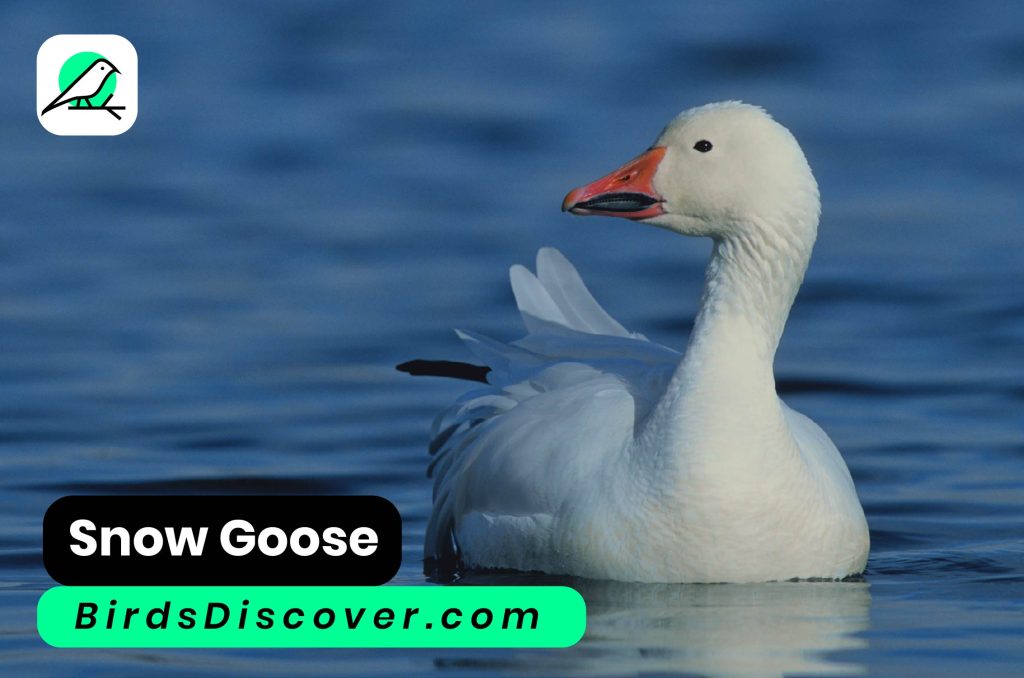
Snow Goose Biography, Sound
| Aspect | Details |
|---|---|
| Scientific Name | Anser caerulescens |
| Common Name | Snow Goose |
| Family | Anatidae |
| Order | Anseriformes |
| Distribution | North America; breeds in Arctic tundra and migrates to the southern United States and Mexico for winter |
| Habitat | Wetlands, marshes, agricultural fields, and estuaries |
| Physical Description | Medium-sized goose with white plumage and black wing tips; “blue” morph has darker plumage |
| Diet | Grains, seeds, and aquatic plants; forages in large flocks |
| Behavior | Migratory; known for large flocks and noisy, honking calls; often seen in agricultural areas during winter |
| Breeding Season | Late spring to early summer; nests in the Arctic tundra |
| Nesting | Builds nests on the ground in open, grassy areas; both parents are involved in incubation and care of young |
| Conservation Status | Least Concern (IUCN Red List) |
| Interesting Fact | Known for dramatic migratory flights and adaptability to various feeding environments; the “blue” morph is less common but distinctive |
Smew
The Smew (Mergellus albellus) is a strikingly attractive and diminutive diving duck native to Eurasia. Known for its distinctive plumage, the male Smew sports a dramatic black and white pattern with a striking red eye, while the female has a more subdued, mottled brown appearance. This small, agile duck is primarily found in northern Europe and Asia, where it inhabits forested lakes and rivers. During the winter, the Smew migrates to milder regions, often taking refuge in open water and coastal areas. It feeds primarily on small fish and aquatic invertebrates, using its specialized bill to filter and capture prey. Smews are known for their diving prowess, often diving several meters below the surface to catch food. Their striking appearance and intriguing behavior make them a fascinating subject for birdwatchers and a key component of the diverse avian life in their seasonal habitats.
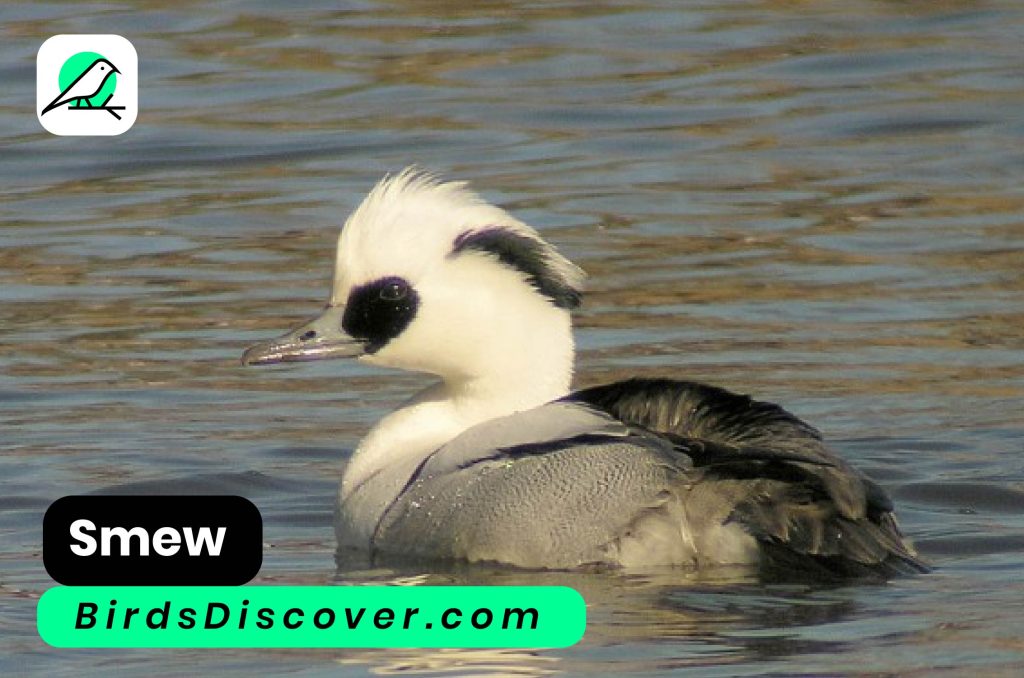
Smew Biography, Sound
| Aspect | Details |
|---|---|
| Scientific Name | Mergellus albellus |
| Common Name | Smew |
| Family | Anatidae |
| Order | Anseriformes |
| Distribution | Northern Europe and Asia; migrates to milder regions for winter |
| Habitat | Forested lakes, rivers, and coastal areas during migration |
| Physical Description | Small diving duck; males have black and white plumage with a red eye; females are mottled brown |
| Diet | Small fish, aquatic invertebrates; feeds by diving and foraging underwater |
| Behavior | Diving duck known for its agility underwater; migrates seasonally from northern breeding grounds |
| Breeding Season | Spring to early summer; breeds in northern Europe and Asia |
| Nesting | Nests in tree cavities or on the ground near water; both parents share in incubating eggs and caring for the young |
| Conservation Status | Least Concern (IUCN Red List) |
| Interesting Fact | Smews are known for their distinctive plumage and diving ability; they can dive several meters underwater |
Kelp Goose
The Kelp Goose (Chloephaga hybrida) is a striking bird native to the southern regions of South America, particularly around the coasts of Chile, Argentina, and the Falkland Islands. Known for its distinctive plumage, the male Kelp Goose is characterized by a striking black head, neck, and chest, contrasting with its white body, while the female is a more subdued brown with mottled coloration. This medium-sized goose is commonly found in coastal areas and rocky shorelines, where it forages for a diet that includes seaweed, grasses, and seeds. The Kelp Goose is adept at navigating its rugged, marine environment and is often seen in flocks or pairs. During the breeding season, it nests on the ground, typically in secluded areas away from predators. Its unique appearance and adaptation to coastal habitats make it a fascinating subject for bird enthusiasts and a key species in its ecological niche.
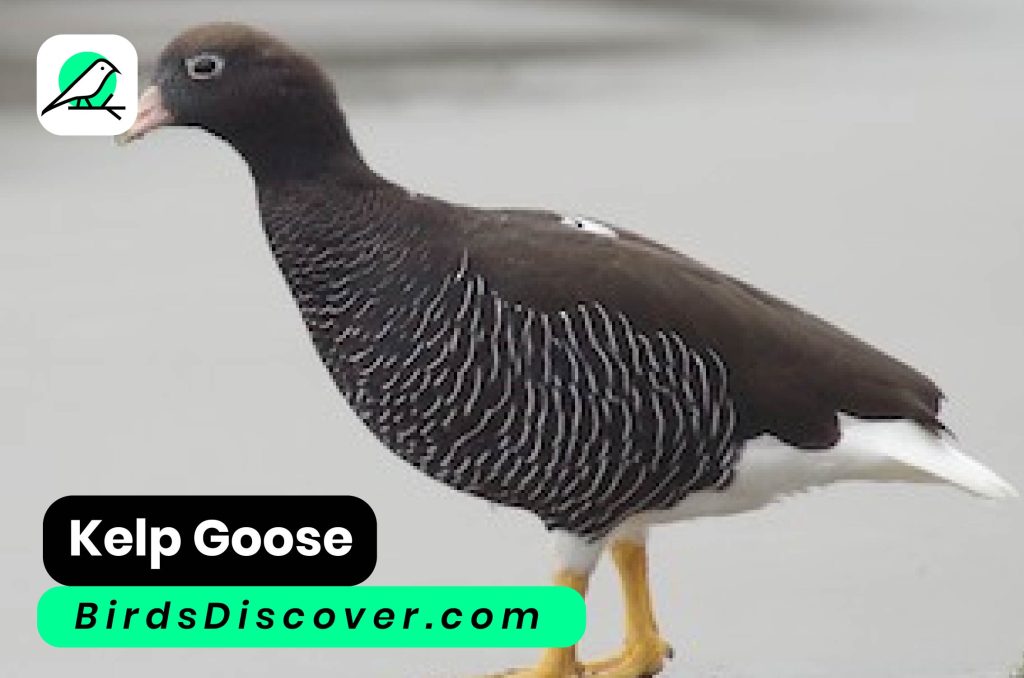
Kelp Goose Biography, Sound
| Aspect | Details |
|---|---|
| Scientific Name | Chloephaga hybrida |
| Common Name | Kelp Goose |
| Family | Anatidae |
| Order | Anseriformes |
| Distribution | Southern South America, including coastal regions of Chile, Argentina, and the Falkland Islands |
| Habitat | Coastal areas, rocky shorelines, and coastal grasslands |
| Physical Description | Medium-sized goose; males have a black head, neck, and chest with a white body; females are brown with mottled plumage |
| Diet | Seaweed, grasses, seeds, and other plant material; forages in coastal environments |
| Behavior | Often found in flocks or pairs; adept at navigating rocky and marine environments |
| Breeding Season | Spring to early summer; nests on the ground in secluded, safe areas |
| Nesting | Builds nests on the ground, often in sheltered or hidden locations |
| Conservation Status | Least Concern (IUCN Red List) |
| Interesting Fact | Adapted to coastal habitats with a diet that includes seaweed; distinctive plumage makes it easily recognizable |
American White Pelican
The American White Pelican (Pelecanus erythrorhynchos) is a striking and large bird native to North America, known for its impressive size and graceful flight. Distinguished by its pure white plumage, black-tipped wings, and large, orange bill with a notable pouch, this pelican is a spectacular sight in both flight and on water. Unlike its brown cousin, the American White Pelican primarily feeds on fish, which it catches using its large, scoop-shaped bill. These birds are often seen in large flocks, either gliding effortlessly across the sky or floating serenely on lakes and rivers. During breeding season, they build nests on remote islands and sandy shores, where they lay their eggs and care for their young. Their dramatic courtship displays and cooperative hunting techniques make them fascinating subjects for birdwatchers and nature enthusiasts.

American White Pelican Biography, Sound
| Aspect | Details |
|---|---|
| Scientific Name | Pelecanus erythrorhynchos |
| Common Name | American White Pelican |
| Appearance | Large bird with white plumage, black-tipped wings, and an orange bill with a prominent pouch. |
| Size | Wingspan: 8 to 9 feet (2.4 to 2.7 meters); Length: 50 to 70 inches (127 to 178 cm) |
| Habitat | Prefers large, shallow lakes, rivers, and wetlands in North America. Breeds on isolated islands. |
| Range | Breeds in Canada and the northern United States; migrates to the southern U.S., Mexico, and Central America for winter. |
| Diet | Primarily fish, but may also eat amphibians and crustaceans. Catches prey using its large, scoop-shaped bill. |
| Breeding | Nests in colonies on isolated islands or sandy shores. Lays 2 to 3 eggs per clutch, with both parents involved in incubation and chick care. |
| Behavior | Known for cooperative hunting techniques and dramatic courtship displays. Flies in large, organized flocks. |
| Conservation Status | Generally stable, though local populations may be affected by habitat loss and environmental changes. |
White bellied Sea Eagle
The White-bellied Sea Eagle (Haliaeetus leucoryphus) is a majestic raptor found across South and Southeast Asia, including regions like India, Sri Lanka, and parts of Indonesia and Australia. This large, powerful bird is distinguished by its striking white underparts and belly, contrasting with its dark brown wings and back. The White-bellied Sea Eagle’s impressive wingspan, which can reach up to 2.1 meters (7 feet), allows it to soar gracefully over its aquatic habitats, including coastal areas, lakes, and rivers. It primarily preys on fish, which it snatches with its sharp talons from the water’s surface, though it may also hunt birds and small mammals. The species is known for its distinctive, loud calls and its elaborate courtship displays. Nesting in tall trees or cliffs, the White-bellied Sea Eagle lays 1 to 2 eggs and both parents share responsibilities in raising their young.

White bellied Sea Eagle Biography, Sound
| Aspect | Details |
|---|---|
| Scientific Name | Haliaeetus leucoryphus |
| Common Name | White-bellied Sea Eagle |
| Appearance | White underparts and belly with dark brown wings and back. |
| Size | Wingspan: up to 2.1 meters (7 feet); Length: 66 to 79 cm (26 to 31 inches) |
| Habitat | Coastal areas, lakes, rivers, and mangroves in South and Southeast Asia. |
| Range | Found in India, Sri Lanka, Southeast Asia, and northern Australia. |
| Diet | Primarily fish, but also preys on birds, small mammals, and carrion. |
| Breeding | Nests in tall trees or cliffs. Lays 1 to 2 eggs per clutch; both parents participate in incubation and chick care. |
| Behavior | Known for soaring gracefully over its habitat, cooperative hunting, and loud, distinctive calls. |
| Conservation Status | Generally stable, but local populations may be affected by habitat loss and environmental changes. |
White tailed kite
The White-tailed Kite (Elanus leucurus) is a striking raptor known for its distinctive plumage and graceful flight. Native to the Americas, this bird is recognizable by its white belly, gray wings, and striking black wingtips, which contrast sharply with its sleek, white head and tail. The White-tailed Kite’s elegant, buoyant flight is often characterized by its distinctive hovering behavior, where it remains suspended in the air while searching for prey. This species primarily feeds on small mammals, such as voles and mice, as well as insects and occasionally small birds. The kite’s preferred habitats include open grasslands, savannas, and agricultural areas. During breeding season, it constructs a large, bulky nest in trees or shrubs, where it lays 2 to 4 eggs. Both parents share responsibilities in incubating the eggs and feeding the chicks, making it a cooperative and dedicated parent.
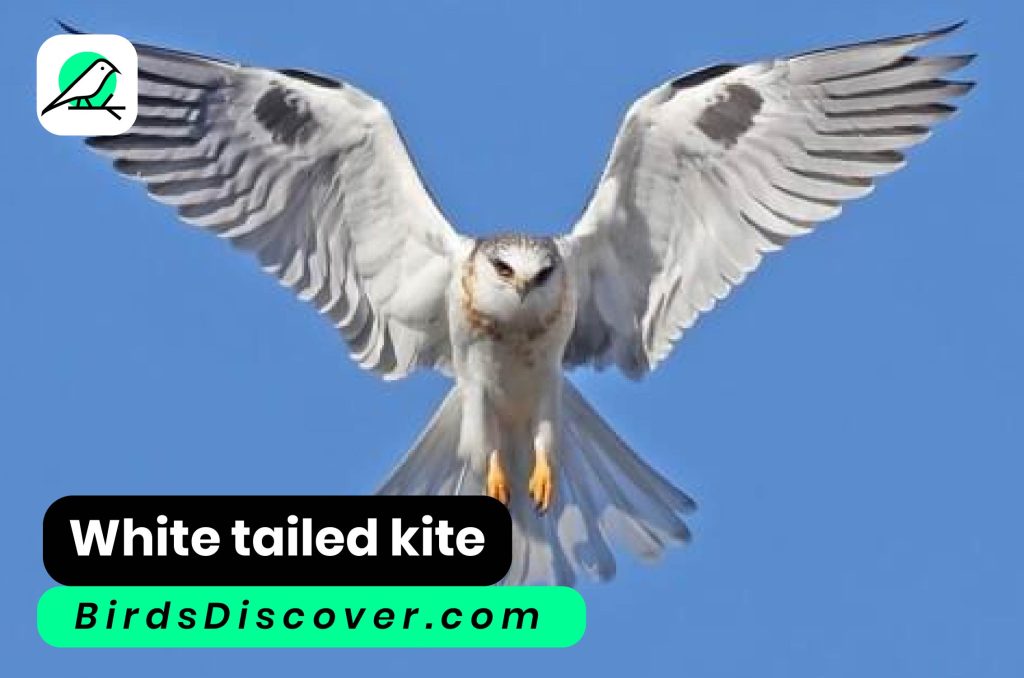
White tailed kite Biography, Sound
| Aspect | Details |
|---|---|
| Scientific Name | Elanus leucurus |
| Common Name | White-tailed Kite |
| Appearance | White belly and tail, gray wings with black wingtips, white head. |
| Size | Wingspan: 1.2 to 1.5 meters (4 to 5 feet); Length: 33 to 38 cm (13 to 15 inches) |
| Habitat | Open grasslands, savannas, agricultural areas, and occasionally forest edges. |
| Range | Found in the Americas, from the southwestern United States and Mexico to Central America and parts of South America. |
| Diet | Primarily small mammals (e.g., voles, mice), insects, and occasionally small birds. |
| Breeding | Builds a large, bulky nest in trees or shrubs. Lays 2 to 4 eggs; both parents incubate and care for the young. |
| Behavior | Notable for its hovering flight while hunting, graceful soaring, and agile maneuvers. |
| Conservation Status | Generally stable; not considered endangered but can be affected by habitat loss. |
Sanderling
The Sanderling (Calidris alba) is a small, agile shorebird known for its distinctive behavior and striking appearance. Characterized by its white underparts and sandy-colored back, the Sanderling is a common sight on sandy beaches and coastal mudflats. This bird is particularly notable for its rapid, erratic running along the shoreline, where it tirelessly probes the sand for small invertebrates such as worms and crustaceans. During the breeding season, which occurs in the Arctic tundra, Sanderlings display a more mottled brown and gray plumage. They undertake impressive migratory journeys, traveling between their breeding grounds in the Arctic and wintering sites in temperate and tropical regions around the world. Their energetic foraging and swift movements make them a captivating subject for birdwatchers. Despite their small size, Sanderlings are resilient travelers, adapting well to various coastal environments throughout the year.
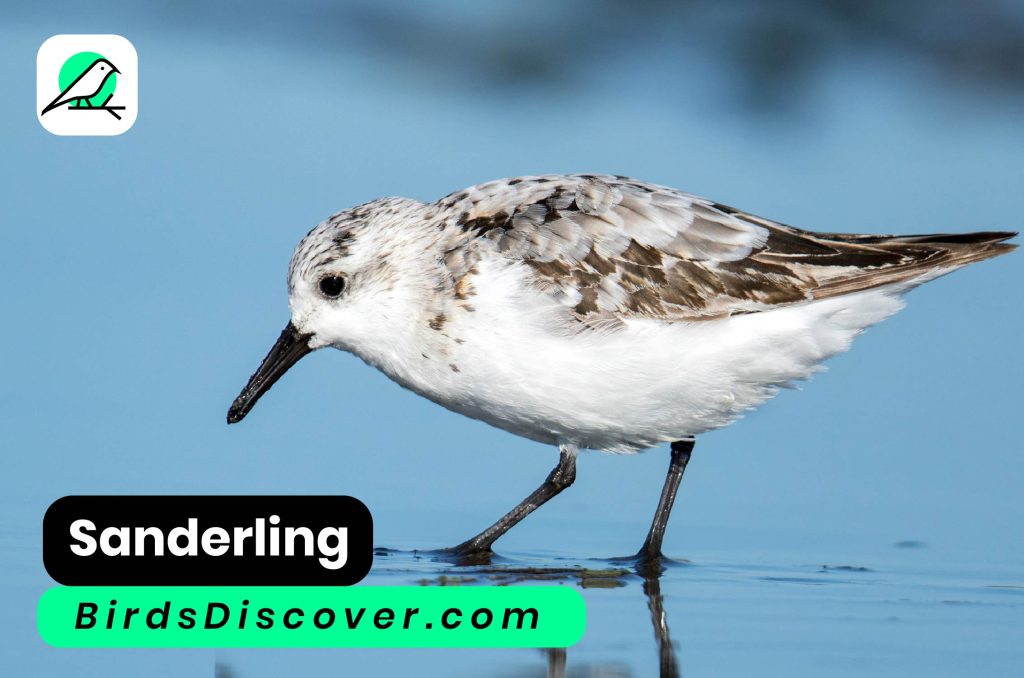
Sanderling Biography, Sound
| Aspect | Details |
|---|---|
| Scientific Name | Calidris alba |
| Common Name | Sanderling |
| Appearance | White underparts with a sandy-colored back; breeding plumage includes mottled brown and gray. |
| Size | Length: 18 to 21 cm (7 to 8 inches); Wingspan: 37 to 42 cm (15 to 17 inches) |
| Habitat | Coastal beaches, mudflats, and estuaries; breeds in Arctic tundra. |
| Range | Breeds in the Arctic regions of North America, Europe, and Asia; migrates to temperate and tropical coasts worldwide for winter. |
| Diet | Primarily small invertebrates such as worms, crustaceans, and insects found in the sand. |
| Breeding | Nests on the ground in Arctic tundra; lays 3 to 4 eggs; both parents are involved in incubating and caring for the young. |
| Behavior | Noted for rapid, erratic running along the shore, foraging in the sand, and forming large flocks during migration. |
| Conservation Status | Generally stable; not considered endangered but may be affected by habitat loss and environmental changes. |
Northern Gannet
The Northern Gannet (Morus bassanus) is a striking seabird renowned for its dramatic appearance and impressive diving skills. With a wingspan of up to 2.2 meters (7.2 feet), this large bird boasts predominantly white plumage, accented by black wingtips and a distinctive yellowish head. The Northern Gannet’s most notable feature is its extraordinary diving ability; it plunges from heights of up to 30 meters (98 feet) into the ocean at high speeds to catch fish, using its streamlined body and sharp beak to capture prey. These gannets breed in large, noisy colonies on cliffs and rocky islands around the North Atlantic, where they build nests on ledges and cliffs. Their courtship displays are elaborate, involving synchronized sky-pointing and mutual bill-clapping. Despite their sometimes aggressive behavior at breeding sites, Northern Gannets are a vital part of marine ecosystems, contributing to the balance of oceanic food chains.
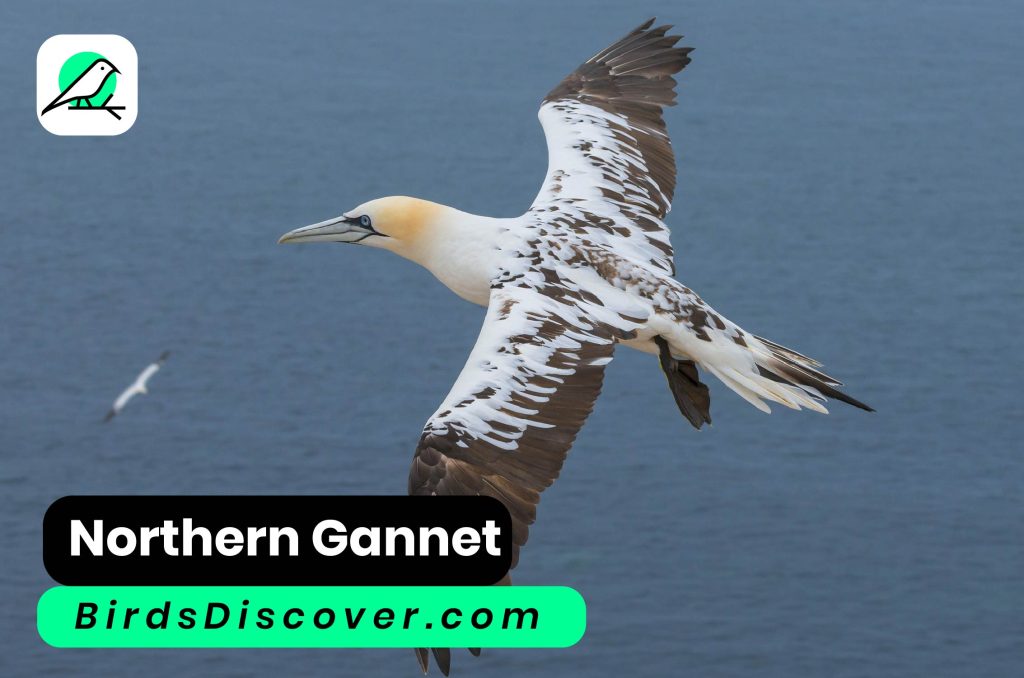
Northern Gannet Biography, Sound
| Aspect | Details |
|---|---|
| Scientific Name | Morus bassanus |
| Common Name | Northern Gannet |
| Appearance | Predominantly white with black wingtips and a yellowish head; sharp, pointed beak. |
| Size | Wingspan: up to 2.2 meters (7.2 feet); Length: 85 to 95 cm (33 to 37 inches) |
| Habitat | Coastal cliffs and rocky islands in the North Atlantic; breeds in large colonies. |
| Range | Breeds in the North Atlantic, including Canada, Iceland, the British Isles, and parts of Europe; migrates across the Atlantic to the western coast of Africa and the Azores. |
| Diet | Primarily fish, including herring, mackerel, and sprats; catches prey by diving from the air. |
| Breeding | Nests in large colonies on cliffs and islands; lays 1 to 2 eggs per clutch; both parents incubate and care for the young. |
| Behavior | Known for spectacular high-speed dives into the ocean; elaborate courtship displays including synchronized sky-pointing and bill-clapping. |
| Conservation Status | Generally stable; not considered endangered, but populations can be affected by environmental changes and human activities. |
White Hawk
The White Hawk (Pseudastur albicollis) is a striking raptor found in the tropical forests and savannas of Central and South America. This medium-sized hawk is distinguished by its predominantly white plumage, accented with subtle gray and black markings. Its white head and underparts contrast with its darker wings and back, giving it a distinctive appearance. The White Hawk is known for its impressive hunting skills, preying on a variety of small to medium-sized animals, including birds, rodents, and insects. It employs a combination of stealth and agility, often perched high in the canopy or soaring silently to spot its prey. During the breeding season, White Hawks build nests in tall trees, where they lay 2 to 3 eggs. Both parents are involved in incubating the eggs and caring for the chicks. Despite its striking appearance and impressive hunting prowess, the White Hawk faces threats from habitat loss and deforestation.
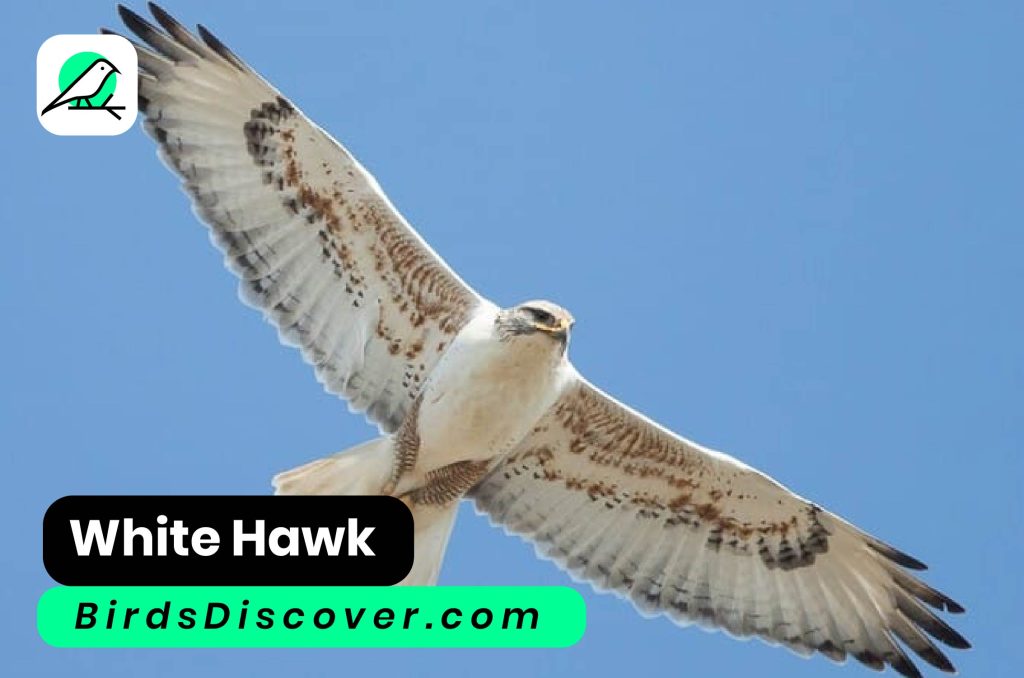
White Hawk Biography, Sound
| Aspect | Details |
|---|---|
| Scientific Name | Pseudastur albicollis |
| Common Name | White Hawk |
| Appearance | Predominantly white plumage with gray and black accents; white head and underparts, darker wings and back. |
| Size | Length: 40 to 50 cm (16 to 20 inches); Wingspan: 95 to 115 cm (37 to 45 inches) |
| Habitat | Tropical forests and savannas in Central and South America. |
| Range | Found from southern Mexico through Central America to western Colombia and Ecuador. |
| Diet | Primarily small to medium-sized prey, including birds, rodents, and insects. |
| Breeding | Nests in tall trees; typically lays 2 to 3 eggs; both parents incubate and care for the young. |
| Behavior | Hunts with stealth and agility, often perched high in the canopy or soaring to spot prey. |
| Conservation Status | Generally stable; habitat loss and deforestation are potential threats. |
American pekin
The American Pekin, also known as the Pekin duck (Anas platyrhynchos domesticus), is a popular domestic breed renowned for its distinctive appearance and gentle temperament. Originating from China, the Pekin duck was introduced to North America in the 19th century, where it has become a favorite among backyard poultry enthusiasts and commercial farmers alike. Characterized by its all-white plumage and bright orange bill and legs, the Pekin is a medium-sized duck with a robust, upright stance. It is highly valued for its meat, which is tender and flavorful, making it a staple in many culinary traditions. Additionally, Pekin ducks are prolific egg layers, producing a substantial number of white eggs annually. Their friendly and calm nature, combined with their adaptability to various environments, makes them ideal for both farming and as pets. Despite their domestication, Pekin ducks retain some of the wild instincts of their ancestors.
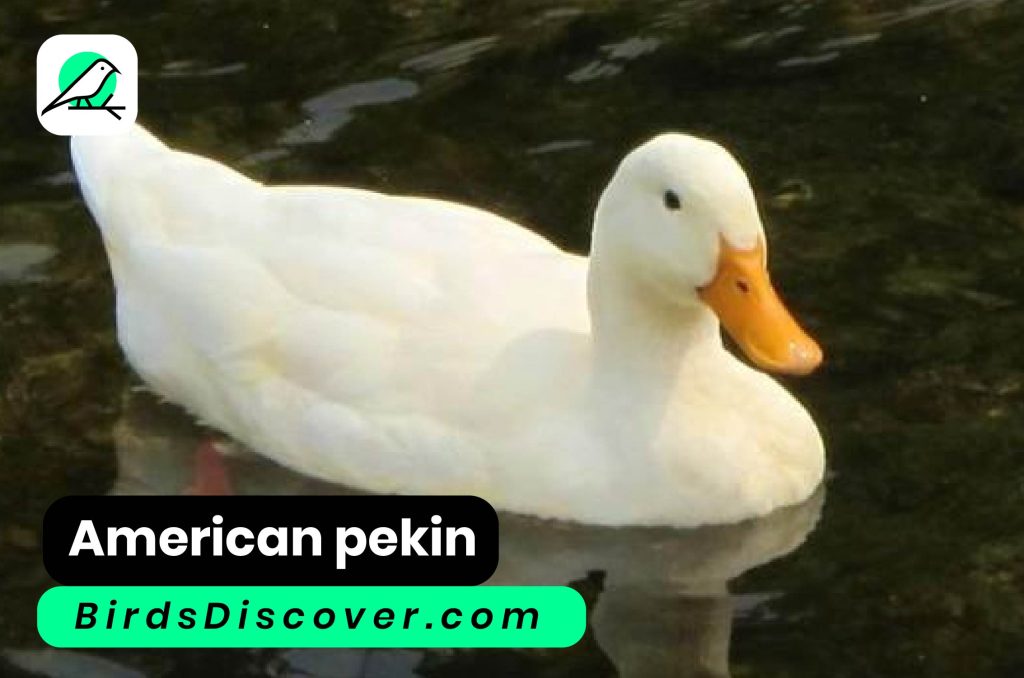
American pekin Biography, Sound
| Aspect | Details |
|---|---|
| Scientific Name | Anas platyrhynchos domesticus |
| Common Name | American Pekin, Pekin Duck |
| Appearance | All-white plumage with bright orange bill and legs; medium-sized with a robust, upright stance. |
| Size | Weight: 2.7 to 4.5 kg (6 to 10 lbs); Size: Medium. |
| Origin | China, introduced to North America in the 19th century. |
| Habitat | Adaptable to various environments; commonly raised in domestic and commercial settings. |
| Diet | Omnivorous; feeds on grains, vegetables, and aquatic plants. |
| Egg Production | Good egg layers, producing around 150 to 200 white eggs per year. |
| Behavior | Friendly, calm, and adaptable; good temperament for pets and farming. |
| Uses | Primarily raised for meat; also valued for eggs and as pets. |
| Conservation Status | Not endangered; widely domesticated and commercially farmed. |
Wood Stork
The Wood Stork (Mycteria americana) is a distinctive wading bird native to the southeastern United States, Central America, and parts of South America. Characterized by its large size, the Wood Stork stands out with its long, bare, white neck, contrasting blackish-gray wings, and massive, curved bill. This bird is typically found in wetlands, swamps, and shallow waters, where it feeds on a diet of fish, amphibians, and crustaceans. The Wood Stork employs a unique feeding strategy called “tidal flushing,” where it sweeps its bill from side to side through the water to catch prey. During the breeding season, Wood Storks build large nests in tall trees, often in colonies with other stork species. Despite their widespread presence, Wood Storks face threats from habitat loss and environmental changes, making them a species of concern for conservationists. Their dramatic appearance and essential role in wetland ecosystems make them a fascinating subject for bird enthusiasts.
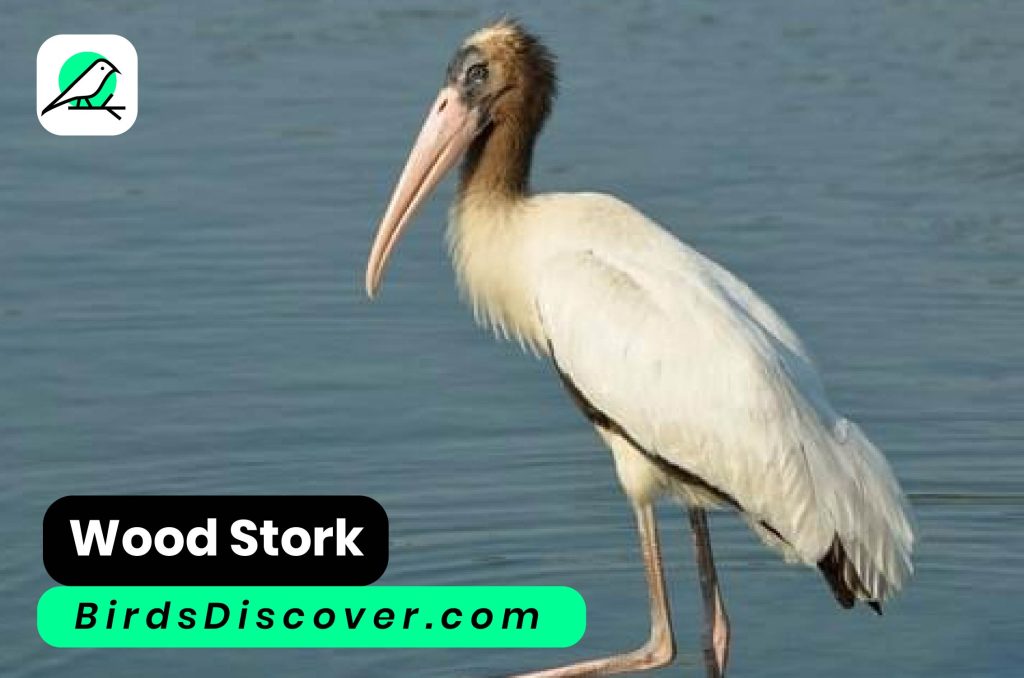
Wood Stork Biography, Sound
| Aspect | Details |
|---|---|
| Scientific Name | Mycteria americana |
| Common Name | Wood Stork |
| Appearance | Large bird with a bare, white neck, blackish-gray wings, and a long, curved bill. |
| Size | Wingspan: 1.4 to 1.7 meters (4.5 to 5.5 feet); Length: 90 to 105 cm (35 to 41 inches) |
| Habitat | Wetlands, swamps, and shallow waters; prefers areas with abundant food sources. |
| Range | Southeastern United States, Central America, and parts of South America. |
| Diet | Primarily fish, but also eats amphibians and crustaceans; uses a side-to-side sweeping motion to catch prey. |
| Breeding | Nests in large colonies in tall trees; lays 3 to 5 eggs; both parents share incubation and care for the young. |
| Behavior | Known for its distinctive feeding technique and large nesting colonies. |
| Conservation Status | Listed as Near Threatened; affected by habitat loss and environmental changes. |
Barbary Dove
The Barbary Dove (Streptopelia risoria), also known as the Ringed Dove or the Peaceful Dove, is a gentle and attractive bird native to North Africa and parts of the Middle East. With its soft, pale gray plumage and distinctive black crescent-shaped ring around the back of its neck, the Barbary Dove is often admired for its serene appearance and calming cooing call. This small dove typically inhabits open woodlands, savannas, and urban areas, where it feeds primarily on seeds, grains, and small fruits. The Barbary Dove is popular in aviculture due to its docile nature and ease of care. During the breeding season, it constructs a simple nest of twigs and leaves, where it lays 1 to 2 eggs. Both parents participate in incubating the eggs and caring for the young. Though widespread and adaptable, the Barbary Dove’s status in the wild is less documented compared to its prevalence in captivity.
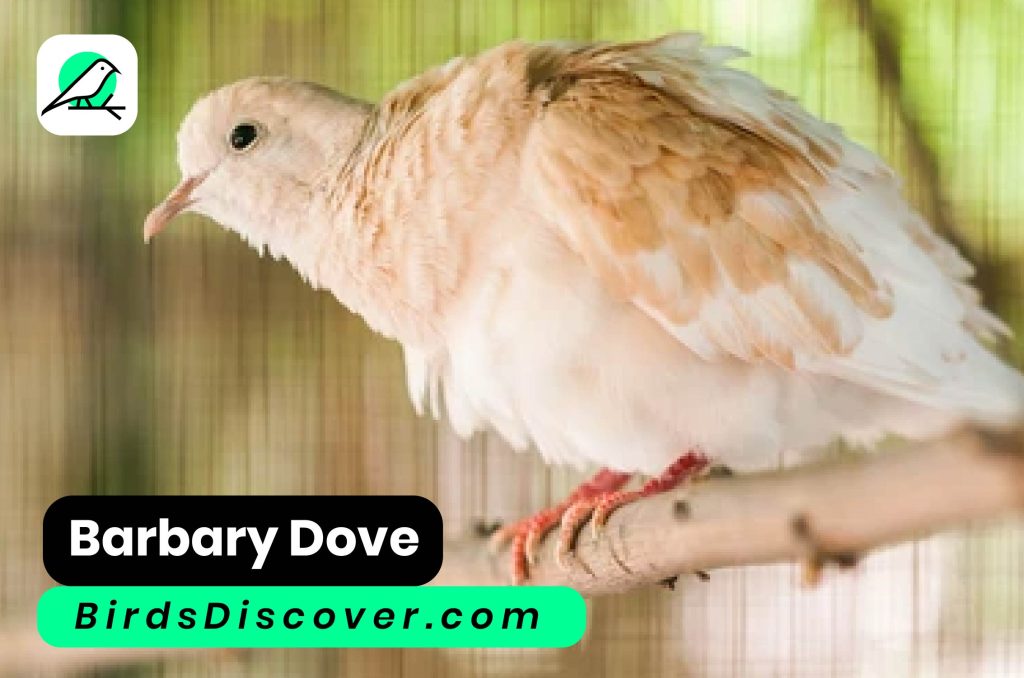
Barbary Dove Biography
| Aspect | Details |
|---|---|
| Scientific Name | Streptopelia risoria |
| Common Name | Barbary Dove, Ringed Dove, Peaceful Dove |
| Appearance | Pale gray plumage with a distinctive black crescent-shaped ring around the back of the neck. |
| Size | Length: 25 to 30 cm (10 to 12 inches); Wingspan: 40 to 45 cm (16 to 18 inches) |
| Habitat | Open woodlands, savannas, and urban areas in North Africa and the Middle East. |
| Range | Native to North Africa and parts of the Middle East; commonly kept in captivity worldwide. |
| Diet | Primarily seeds, grains, and small fruits. |
| Breeding | Builds a simple nest of twigs and leaves; lays 1 to 2 eggs; both parents incubate and care for the chicks. |
| Behavior | Known for its docile nature and gentle cooing call; often kept as a pet. |
| Conservation Status | Generally stable in the wild; widely kept in captivity. |
European Herring Gull
The European Herring Gull (Larus argentatus) is a robust and versatile seabird found across Europe and parts of North America. Recognizable by its striking appearance, the adult herring gull features a pale gray back, white underparts, and a distinctive black wingtip with white spots. Its large size, powerful bill, and keen eyes make it an adept scavenger, feeding on a varied diet that includes fish, invertebrates, and even human refuse. European Herring Gulls are known for their loud, harsh calls and their bold, opportunistic behavior, often seen scavenging in urban areas and at coastal resorts. They breed in large colonies on cliffs, rooftops, or islands, where they build nests of sticks and other materials. The species exhibits a high degree of adaptability, thriving in both natural and human-altered environments. Despite their widespread presence, they face threats from habitat loss and pollution.
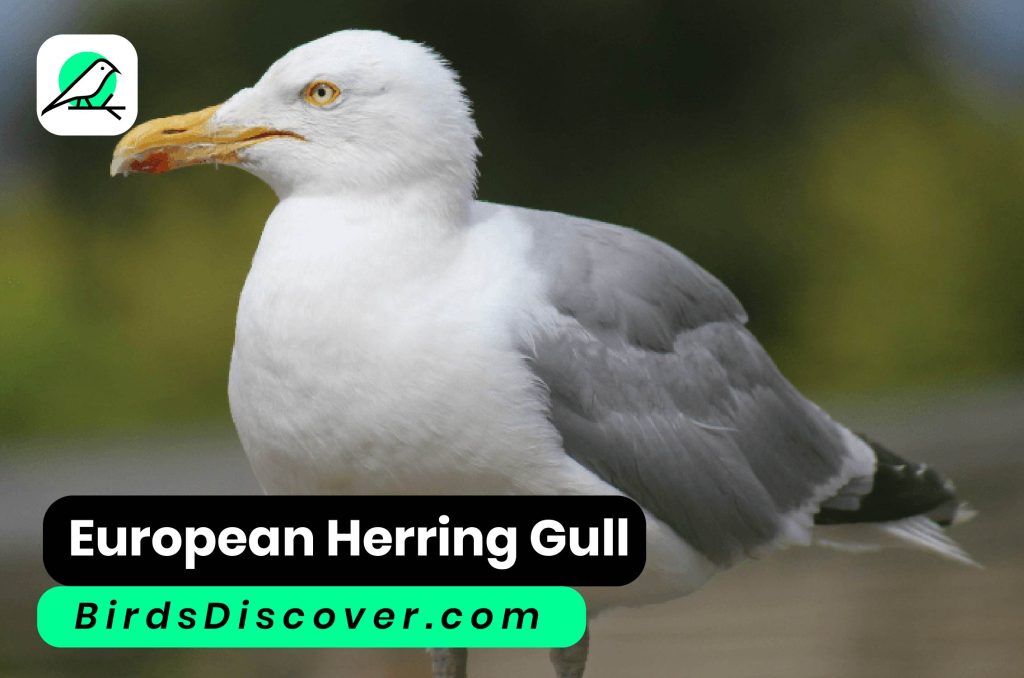
European Herring Gull Biography, Sound
| Aspect | Details |
|---|---|
| Scientific Name | Larus argentatus |
| Common Name | European Herring Gull |
| Appearance | Pale gray back, white underparts, black wingtip with white spots, and a large yellow bill. |
| Size | Length: 55 to 67 cm (22 to 26 inches); Wingspan: 1.3 to 1.5 meters (4.3 to 4.9 feet) |
| Habitat | Coastal areas, cliffs, islands, and urban environments across Europe and parts of North America. |
| Range | Found throughout Europe and the eastern coast of North America. |
| Diet | Omnivorous; feeds on fish, invertebrates, and human refuse. |
| Breeding | Nests in large colonies on cliffs, rooftops, or islands; lays 2 to 3 eggs; both parents incubate and care for the chicks. |
| Behavior | Known for loud, harsh calls; bold and opportunistic, often scavenges in urban areas. |
| Conservation Status | Generally stable; not considered endangered but faces threats from habitat loss and pollution. |
Gyrfalcon
The Gyrfalcon (Falco rusticolus) is the largest of the falcon species, known for its impressive size and striking appearance. Native to the Arctic regions of North America, Europe, and Asia, this powerful raptor is distinguished by its varied plumage, which can range from pure white to dark gray, depending on the individual. The Gyrfalcon’s formidable wingspan, reaching up to 1.5 meters (5 feet), and its strong, curved beak make it an adept hunter, preying on birds and mammals such as ptarmigans, hares, and squirrels. In the wild, Gyrfalcons are typically found in remote, open tundra and mountainous areas where they build their nests on cliffs or in large trees. During the breeding season, they lay 2 to 4 eggs, and both parents are involved in incubation and chick-rearing. Due to their specialized habitat and hunting skills, Gyrfalcons are often sought after in falconry, symbolizing both power and grace.
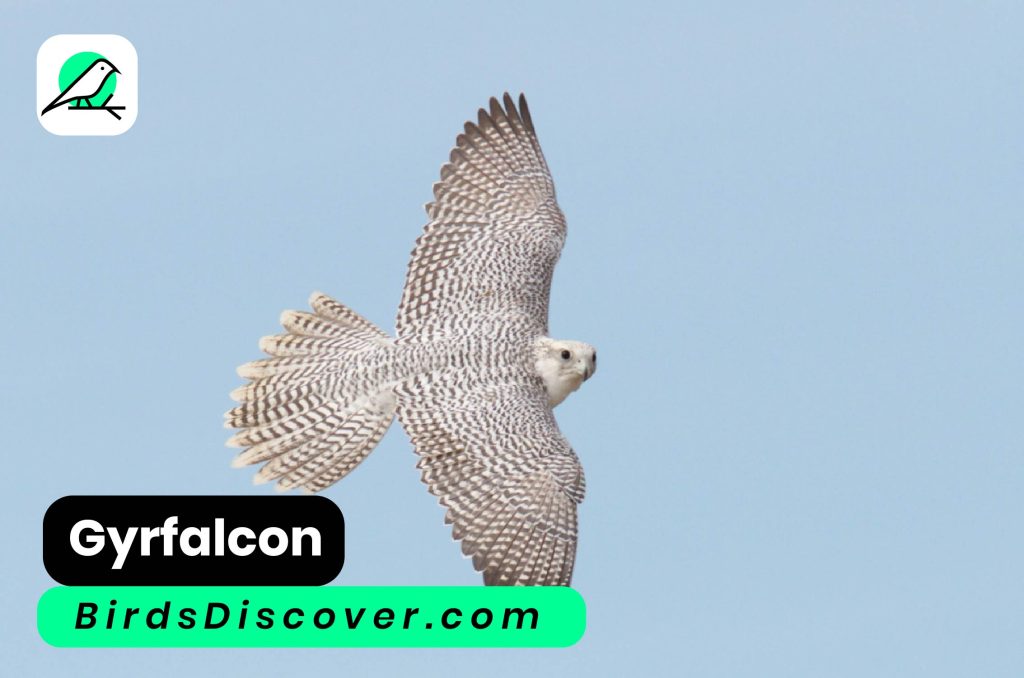
Gyrfalcon Biography, Sound
| Aspect | Details |
|---|---|
| Scientific Name | Falco rusticolus |
| Common Name | Gyrfalcon |
| Appearance | Plumage varies from white to dark gray; large size, with a robust build and a strong, curved beak. |
| Size | Wingspan: up to 1.5 meters (5 feet); Length: 50 to 65 cm (20 to 26 inches) |
| Habitat | Arctic regions, including tundra, mountains, and cliffs; breeds in remote, open areas. |
| Range | Found in the Arctic regions of North America, Europe, and Asia; migrates south in winter. |
| Diet | Primarily birds and small mammals, including ptarmigans, hares, and squirrels. |
| Breeding | Nests on cliffs or large trees; lays 2 to 4 eggs; both parents participate in incubation and chick care. |
| Behavior | Known for its impressive hunting skills and large size; often used in falconry. |
| Conservation Status | Generally stable; not considered endangered but faces threats from habitat loss and climate change. |
Mute Swan
The Mute Swan (Cygnus olor) is one of the most recognizable and graceful waterfowl in the Northern Hemisphere, known for its elegant white plumage and long, curved neck. Native to Europe and Asia, it has also established populations in North America. Adults are distinguished by their pure white feathers and an orange bill with a black knob at the base, which is more pronounced in males. Mute Swans are commonly found on lakes, rivers, and ponds, where they feed on aquatic vegetation and occasionally small invertebrates. Their large size and striking appearance make them a popular subject for birdwatchers and photographers. During the breeding season, Mute Swans build large nests of reeds and other plant material on the water’s edge or in dense vegetation. They are known for their strong pair bonds, with both parents participating in incubating the eggs and rearing the cygnets, which are covered in soft gray down until they fledge.
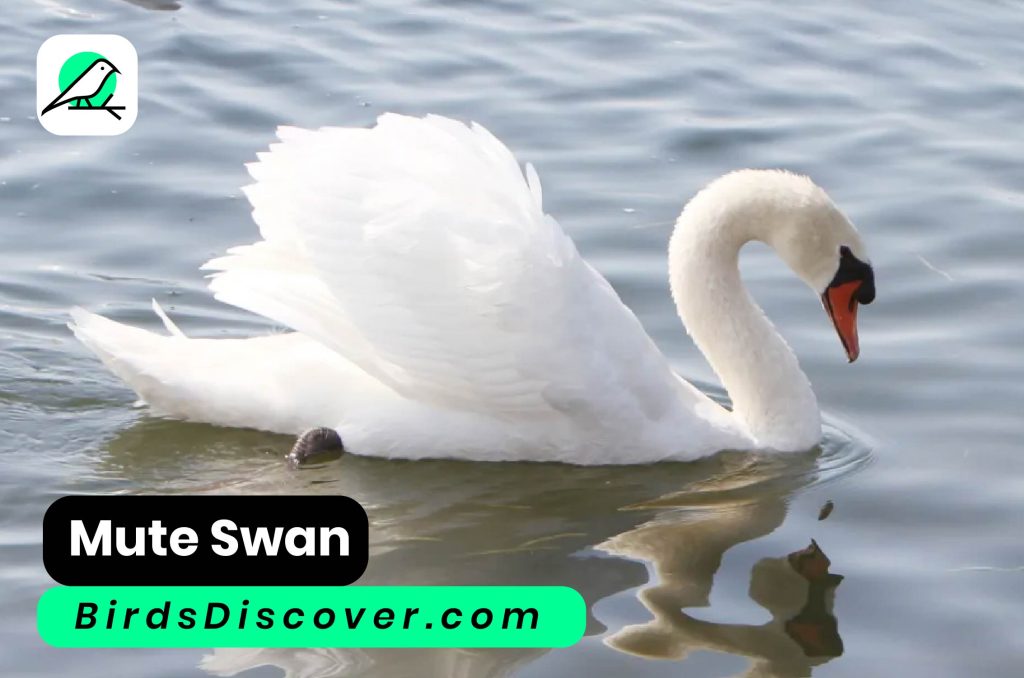
Mute Swan Biography, Sound
| Aspect | Details |
|---|---|
| Scientific Name | Cygnus olor |
| Common Name | Mute Swan |
| Appearance | Elegant white plumage with a long, curved neck; orange bill with a black knob. |
| Size | Length: 125 to 170 cm (49 to 67 inches); Wingspan: 2 to 2.4 meters (6.6 to 7.9 feet) |
| Habitat | Lakes, rivers, ponds, and wetlands in Europe, Asia, and North America. |
| Range | Native to Europe and Asia; introduced and established in North America. |
| Diet | Aquatic vegetation, occasionally small invertebrates and insects. |
| Breeding | Builds large nests of reeds and plant material; lays 5 to 8 eggs; both parents incubate and care for the cygnets. |
| Behavior | Known for strong pair bonds and territorial behavior; often seen gliding gracefully on water. |
| Conservation Status | Generally stable; not considered endangered, but populations can be affected by habitat changes and human activity. |
Royal Spoonbill
The Royal Spoonbill (Platalea regia) is a striking wader native to Australia, known for its distinctive appearance and elegant demeanor. This bird is easily recognizable by its large, spoon-shaped bill, which is bright yellow or pink during breeding season. Its plumage is predominantly white, complemented by black legs and a black line running from its eye to its bill. Royal Spoonbills are typically found in shallow wetlands, estuaries, and mangroves, where they use their unique bill to filter-feed on small fish, crustaceans, and insects. They exhibit a graceful, deliberate feeding style, sweeping their bills from side to side in the water. During the breeding season, Royal Spoonbills build large, messy nests in trees or shrubs, where they lay 2 to 4 eggs. Both parents are involved in incubating the eggs and feeding the chicks. Despite their somewhat regal appearance, these birds are adapted to a variety of wetland habitats and play a crucial role in their ecosystems.
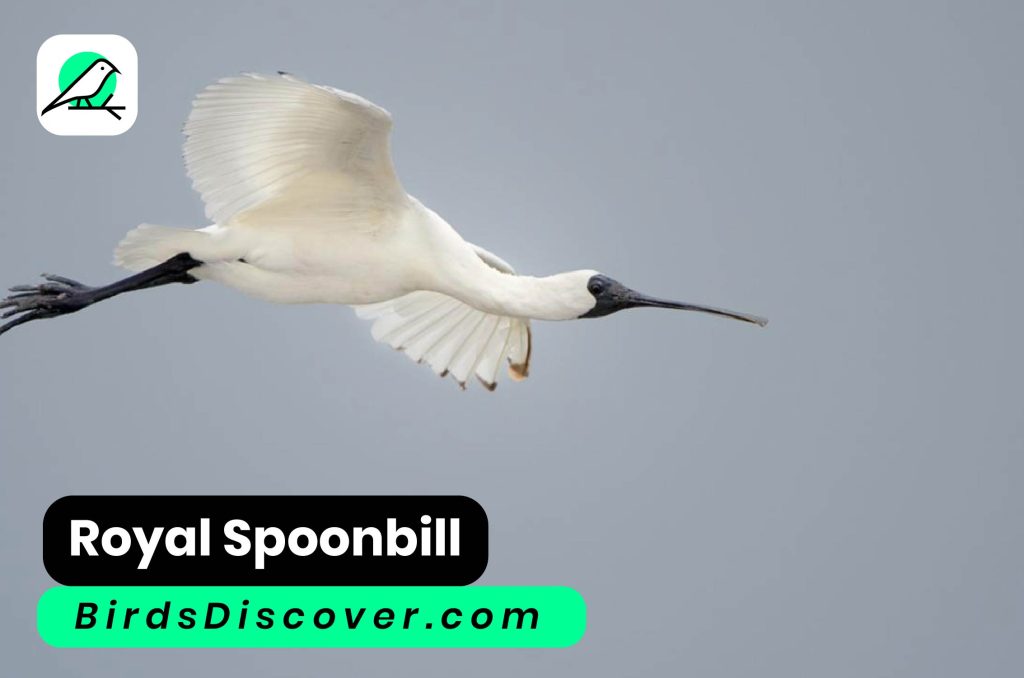
Royal Spoonbill Biography, Sound
| Aspect | Details |
|---|---|
| Scientific Name | Platalea regia |
| Common Name | Royal Spoonbill |
| Appearance | Predominantly white plumage with a large, spoon-shaped bill that is yellow or pink during breeding season; black legs and a black line from eye to bill. |
| Size | Length: 70 to 80 cm (28 to 31 inches); Wingspan: 1.3 to 1.4 meters (4.3 to 4.6 feet) |
| Habitat | Shallow wetlands, estuaries, mangroves, and mudflats in Australia. |
| Range | Found mainly in eastern and southern Australia; also in parts of New Guinea and nearby islands. |
| Diet | Small fish, crustaceans, and insects; feeds by sweeping its spoon-shaped bill through the water. |
| Breeding | Nests in trees or shrubs; builds large, messy nests; lays 2 to 4 eggs; both parents share incubation and chick-rearing duties. |
| Behavior | Graceful feeding style; known for its distinctive bill and elegant appearance. |
| Conservation Status | Generally stable; not considered endangered, but sensitive to habitat changes and environmental disturbances. |
Willow Ptarmigan
The Willow Ptarmigan (Lagopus lagopus) is a remarkable bird adapted to the harsh environments of the Arctic and sub-Arctic regions. This medium-sized grouse is renowned for its seasonal plumage changes, which provide excellent camouflage against the varied landscapes it inhabits. In summer, the Willow Ptarmigan displays a mottled brown and white coat, blending seamlessly with the tundra’s vegetation. During winter, it molts into a pure white plumage, which helps it blend into the snowy landscape. The Willow Ptarmigan is primarily herbivorous, feeding on a diet of leaves, buds, berries, and seeds. It is well adapted to cold climates with its feathered legs and feet, which help insulate it from freezing temperatures. Breeding occurs on the ground, where it builds a nest in the vegetation. Both parents are involved in rearing the young, which are precocial and capable of walking shortly after hatching. Despite its adaptability, the Willow Ptarmigan is sensitive to habitat changes and climate variations.

Willow Ptarmigan Biography, Sound
| Aspect | Details |
|---|---|
| Scientific Name | Lagopus lagopus |
| Common Name | Willow Ptarmigan |
| Appearance | Seasonal plumage changes: brown and white mottling in summer, pure white in winter; feathered legs and feet. |
| Size | Length: 33 to 36 cm (13 to 14 inches); Wingspan: 50 to 60 cm (20 to 24 inches) |
| Habitat | Arctic and sub-Arctic regions, including tundra, taiga, and mountainous areas. |
| Range | Found across the Arctic regions of North America and Eurasia; migrates seasonally. |
| Diet | Primarily herbivorous; feeds on leaves, buds, berries, and seeds. |
| Breeding | Nests on the ground in vegetation; lays 6 to 12 eggs; both parents are involved in incubation and rearing. |
| Behavior | Adapted to cold climates with feathered legs and feet; camouflage plumage for seasonal protection. |
| Conservation Status | Generally stable; not considered endangered but sensitive to habitat changes and climate variations. |
Ross’s Goose
The Ross’s Goose, often overshadowed by its larger cousin, the Snow Goose, possesses its own unique charm and ecological significance. Named after the American explorer Bernard R. Ross, this small, compact goose inhabits Arctic and subarctic regions of North America during the breeding season. With its distinguishing petite size and delicate appearance, the Ross’s Goose weighs only about three pounds and measures around 24 inches in length. Its plumage is predominantly white, marked by a small, triangular-shaped bill that is pinkish in color, distinguishing it from the Snow Goose.
Despite its diminutive stature, the Ross’s Goose undertakes impressive migrations, traveling vast distances from its breeding grounds to wintering areas in the southern United States and Mexico. In recent decades, conservation efforts have highlighted the Ross’s Goose’s habitat needs, particularly wetlands and coastal areas crucial for its survival. As such, understanding and protecting these habitats are essential for ensuring the continued presence of this charming species in our ecosystems.

Ross’s Goose Biography, Sound
| Characteristic | Description |
|---|---|
| Scientific Name | Anser rossii |
| Common Name | Ross’s Goose |
| Named After | Named after the American explorer Bernard R. Ross |
| Size | Small, weighs about 3 pounds |
| Length | Approximately 24 inches |
| Plumage | Predominantly white |
| Bill Color | Small, triangular-shaped bill that is pinkish |
| Habitat (Breeding) | Arctic and subarctic regions of North America |
| Migration | Undertakes impressive migrations from breeding grounds to wintering areas in southern United States and Mexico |
| Conservation Status | Concerns over habitat loss, particularly wetlands and coastal areas |
| Ecological Role | Plays a significant role in ecosystems by grazing on grasses and aquatic plants, contributing to nutrient cycling; also serves as prey for predators like Arctic foxes and birds of prey |
| Population Trends | Stable overall, with fluctuations noted in response to habitat changes |
| Conservation Efforts | Emphasize protection and restoration of wetlands and coastal habitats crucial for nesting and migration; monitoring population dynamics to assess impacts of climate change and human activities |
| Interesting Fact | Often mistaken for the Snow Goose due to similarities in appearance; distinguished by smaller size and bill color |
Red-vented Cockatoo
The Red-vented Cockatoo, scientifically known as Cacatua haematuropygia, is a striking parrot native to the Philippines, particularly on the islands of Tawitawi and Sanga-Sanga. Known for its vibrant plumage, it features a predominantly white body contrasted by a vivid red patch at the base of its tail, which gives the species its name. This cockatoo species is characterized by its distinctive crest and powerful beak, adapted for cracking nuts and seeds found in its tropical forest habitat.
Red-vented Cockatoos are social birds, often seen in small flocks or pairs, and they communicate with loud calls that echo through the forest canopy. Unfortunately, like many parrot species, the Red-vented Cockatoo faces threats from habitat loss due to deforestation and illegal trapping for the pet trade. Conservation efforts focus on protecting remaining forest habitats and raising awareness about the importance of preserving these charismatic birds in their natural environment.

Red-vented Cockatoo Biography, Sound
| Characteristic | Description |
|---|---|
| Scientific Name | Cacatua haematuropygia |
| Common Name | Red-vented Cockatoo |
| Distribution | Endemic to the Philippines, specifically found on the islands of Tawitawi and Sanga-Sanga |
| Plumage | Predominantly white with a vibrant red patch at the base of the tail |
| Size | Medium-sized parrot, typically around 12-14 inches (30-35 cm) in length |
| Crest | Distinctive crest that can be raised or lowered depending on the bird’s mood or alertness |
| Beak | Powerful beak adapted for cracking nuts and seeds |
| Habitat | Tropical forests and forest edges, where it feeds on fruits, nuts, and seeds |
| Behavior | Social birds often found in pairs or small flocks; communicate with loud calls and vocalizations |
| Conservation Status | Vulnerable due to habitat loss from deforestation and illegal trapping for the pet trade; listed on Appendix II of CITES (Convention on International Trade in Endangered Species) |
| Threats | Habitat destruction, trapping for the pet trade, and possibly climate change affecting its forest habitat |
| Conservation Efforts | Focus on habitat protection, including conservation of remaining forest areas; efforts to combat illegal trapping and promote sustainable forestry practices |
Glaucous Gulls
The Glaucous Gull, scientifically named Larus hyperboreus, is a formidable seabird inhabiting Arctic and subarctic regions across the Northern Hemisphere. Known for its large size and robust build, adult Glaucous Gulls display striking plumage characterized by pale gray or white feathers, which blend seamlessly into their icy surroundings. They possess a powerful beak and strong claws, essential for scavenging and hunting prey such as fish, seabirds, and small mammals. These adaptable predators are opportunistic feeders, often exploiting marine environments for food resources.
During breeding season, Glaucous Gulls establish nests on remote coastal cliffs or islands, where they fiercely defend their territories. Conservation efforts for these gulls focus on monitoring their populations, as they face threats from habitat disturbance, pollution, and climate change affecting Arctic ecosystems. Understanding their ecological role as both predators and scavengers is crucial for maintaining biodiversity in fragile Arctic environments where they play a significant role.
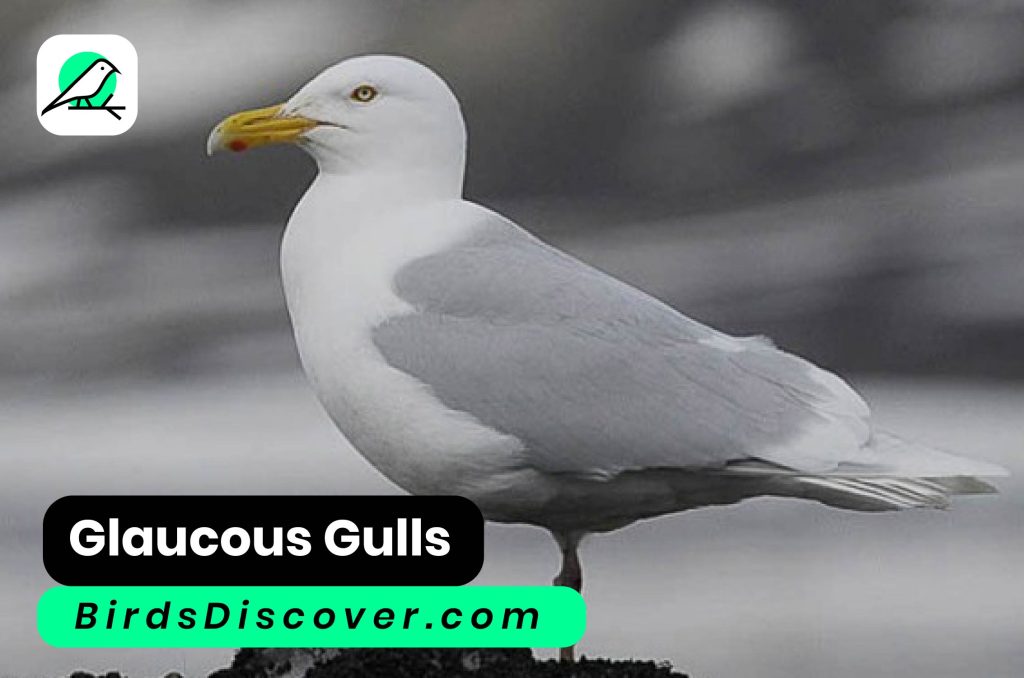
Glaucous Gulls Biography
| Characteristic | Description |
|---|---|
| Scientific Name | Larus hyperboreus |
| Common Name | Glaucous Gull |
| Distribution | Arctic and subarctic regions of the Northern Hemisphere, including coastal areas and islands |
| Size | Large seabird, with adults typically measuring 60-70 cm (24-28 inches) in length |
| Plumage | Adult plumage is pale gray or white, sometimes with a faint lavender hue; juveniles are mottled brown |
| Beak and Claws | Powerful beak and strong claws adapted for scavenging and hunting various prey, including fish, seabirds, small mammals, and carrion |
| Behavior | Opportunistic feeders known for scavenging and predation; aggressive defenders of nesting territories |
| Breeding | Nests on coastal cliffs, rocky islands, and tundra during the breeding season; lays 2-3 eggs in a nest lined with grass and feathers |
| Conservation Status | Generally stable population; faces threats from habitat disturbance, pollution, and climate change affecting Arctic ecosystems |
| Ecological Role | Plays a crucial role as both predator and scavenger in Arctic food webs; helps regulate populations of prey species and contributes to nutrient cycling |
| Conservation Efforts | Conservation efforts focus on monitoring populations, studying ecological impacts, and mitigating human-induced threats like pollution and habitat degradation |
Snowy Sheathbill
The Snowy Sheathbill (Chionis albus) is a distinctive Antarctic bird renowned for its adaptation to the harsh polar environment. Resembling a large, plump gull with a unique pinkish beak, this species stands out against the icy landscape it calls home. Despite its gull-like appearance, the Snowy Sheathbill belongs to its own family, Chionidae, and is notable for being one of the few land-based bird species native to Antarctica. These opportunistic feeders scavenge on carrion, fish, and invertebrates, often found near penguin and seal colonies where they play a critical ecological role in cleaning up debris. Their bold nature and adaptability have enabled them to thrive in one of the world’s most extreme environments, where temperatures can drop well below freezing. However, like many Antarctic species, Snowy Sheathbills face challenges from climate change and human activities, underscoring the importance of conservation efforts to safeguard their unique habitat and ecological niche.
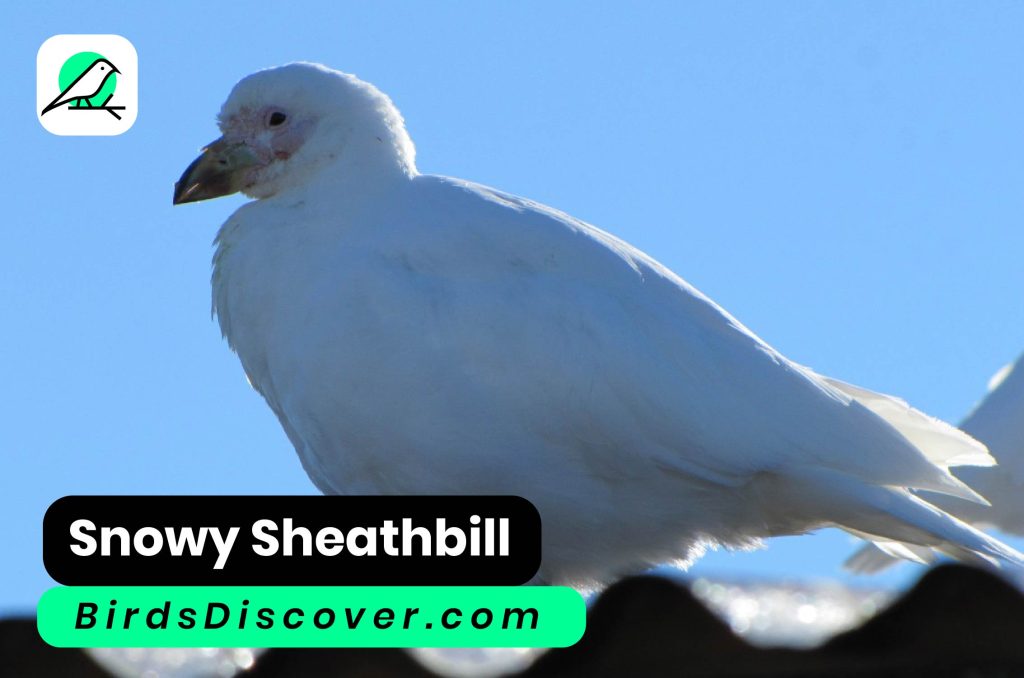
Snowy Sheathbill Biography, Sound
| Characteristic | Description |
|---|---|
| Scientific Name | Chionis albus |
| Common Name | Snowy Sheathbill |
| Distribution | Native to Antarctica and subantarctic islands, including South Georgia and the South Sandwich Islands |
| Size | Medium-sized bird, typically 35-40 cm (14-16 inches) in length |
| Plumage | White plumage overall, with a pinkish or orange facial shield and legs |
| Habitat | Coastal areas, especially around penguin and seal colonies; also found on rocky shores and ice fields |
| Feeding Habits | Opportunistic feeder, scavenging on carrion, fish, invertebrates, and occasionally stealing food from other seabirds |
| Behavior | Sociable and often seen in small groups or pairs; known for its bold and curious nature |
| Ecological Role | Plays a vital role in Antarctic ecosystems by cleaning up debris around nesting sites of penguins and seals, contributing to nutrient cycling |
| Adaptations | Well-adapted to extreme cold with thick plumage and waterproof feathers; pinkish facial shield helps regulate body temperature |
| Conservation Status | Not globally threatened; populations are stable, but vulnerable to environmental changes in Antarctica due to climate change and human disturbances |
| Conservation Efforts | Monitoring populations and studying their ecological interactions; efforts to mitigate human impacts such as pollution and habitat disturbance in Antarctica |
African Spoonbill
The African Spoonbill (Platalea alba) is an elegant wading bird distinguished by its unique bill shaped like a spoon, which it uses to sweep through shallow waters in search of aquatic invertebrates and small fish. Found across sub-Saharan Africa, these birds prefer wetland habitats such as marshes, lakes, and lagoons where they feed and nest communally. Their plumage is predominantly white, complemented by black wingtips and a distinctive red facial patch during breeding season. African Spoonbills are known for their graceful flight and are often observed wading in shallow water, sweeping their bills from side to side to capture prey. Conservation efforts focus on protecting their wetland habitats, which are increasingly threatened by human activities such as habitat loss and pollution. By safeguarding these vital ecosystems, efforts aim to ensure the continued survival of this charismatic species in Africa’s diverse avian landscape.
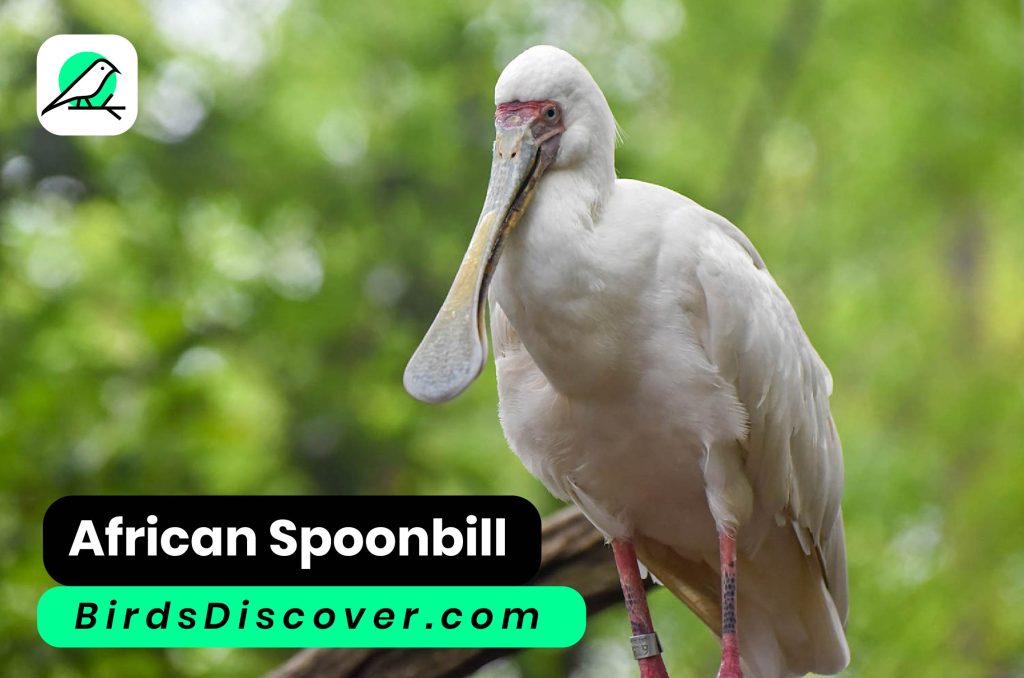
African Spoonbill Biography, Sound
| Characteristic | Description |
|---|---|
| Scientific Name | Platalea alba |
| Common Name | African Spoonbill |
| Distribution | Sub-Saharan Africa, including regions with suitable wetland habitats such as marshes, lakes, rivers, and lagoons |
| Size | Medium-sized wading bird, typically around 80 cm (31 inches) in length |
| Plumage | Predominantly white plumage with black wingtips; distinctive red facial patch and yellow bill during breeding season |
| Bill | Long, spoon-shaped bill adapted for feeding in shallow water; used to sweep side to side to catch aquatic invertebrates and small fish |
| Habitat | Prefers wetland habitats including freshwater marshes, swamps, lakeshores, and coastal lagoons |
| Feeding Habits | Feeds mainly on aquatic invertebrates such as insects, crustaceans, mollusks, and small fish; forages by sweeping its bill through shallow water |
| Behavior | Often seen wading slowly in shallow water or standing motionless while hunting; nests communally in trees or reed beds near water bodies |
| Breeding | Forms breeding colonies during the wet season; builds platform nests of sticks and vegetation in trees or reed beds near water |
| Conservation Status | Generally stable population; faces threats from habitat loss due to wetland degradation, pollution, and disturbance by human activities |
| Conservation Efforts | Focuses on protecting and restoring wetland habitats; monitoring populations and breeding sites; raising awareness about the importance of wetlands for biodiversity |
White-Tailed Ptarmigan
The White-tailed Ptarmigan (Lagopus leucura) is a small, elusive bird native to the alpine and subalpine regions of North America, particularly in mountainous areas from Alaska to the western United States. Its seasonal plumage serves as exceptional camouflage against the rocky and snowy landscapes it inhabits, transitioning from white in winter to mottled brown and gray in summer. This adaptation helps it evade predators such as foxes, eagles, and owls, which are common in its habitat. White-tailed Ptarmigans are herbivorous, primarily feeding on buds, leaves, and seeds found in their alpine environment. They are renowned for their ability to withstand extreme cold, relying on dense feathers and behaviors such as burrowing into snow to conserve heat during harsh winter months. Conservation efforts focus on monitoring populations, managing habitats, and studying the impacts of climate change on these specialized birds, ensuring their survival in their challenging high-altitude homes.
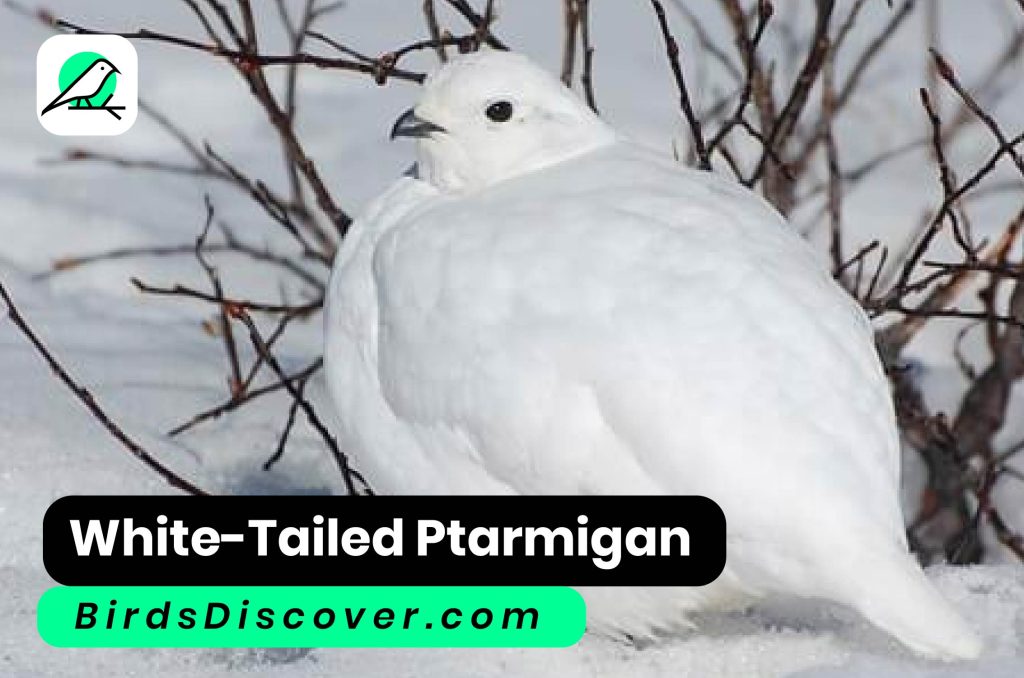
White-Tailed Ptarmigan Biography, Sound
| Characteristic | Description |
|---|---|
| Scientific Name | Lagopus leucura |
| Common Name | White-tailed Ptarmigan |
| Distribution | Alpine and subalpine regions of North America, from Alaska through the western United States |
| Size | Small game bird, typically 30-36 cm (12-14 inches) in length |
| Plumage | Seasonally camouflaged: white in winter for snow-covered habitats, mottled brown and gray in summer to blend with rocky terrain |
| Habitat | High-altitude environments, including alpine tundra, rocky slopes, and subalpine meadows |
| Feeding Habits | Herbivorous diet consisting of buds, leaves, flowers, seeds, and insects; forages on the ground and in low vegetation |
| Behavior | Solitary or found in small family groups; displays aggressive behavior during mating season |
| Adaptations | Thick plumage and feathered feet for insulation; ability to change plumage color to match surroundings; uses snow burrows for shelter and warmth |
| Breeding | Nests in shallow depressions on the ground lined with plant material; females typically lay 5-8 eggs |
| Conservation Status | Generally stable population; faces threats from habitat degradation due to climate change, recreational activities, and predation |
| Conservation Efforts | Focuses on habitat management, including protecting alpine and subalpine ecosystems, monitoring populations, and studying responses to climate change |
Yellow-Crested Cockatoo
The Yellow-crested Cockatoo (Cacatua sulphurea) is a charismatic parrot species native to Indonesia and East Timor. Known for its striking appearance, it features a predominantly white plumage adorned with a distinctive yellow crest atop its head. This crest can be raised or lowered depending on the bird’s mood or level of alertness. Yellow-crested Cockatoos are social birds often seen in pairs or small flocks, communicating through loud screeches and calls. They primarily inhabit tropical forests and coastal areas, where they feed on seeds, nuts, fruits, and occasionally insects. Despite their vibrant presence, these cockatoos face significant threats from habitat loss due to deforestation and illegal pet trade. Conservation efforts focus on protecting their remaining habitats, enforcing wildlife trade regulations, and raising awareness about the importance of preserving these iconic birds in their natural environment to ensure their long-term survival.
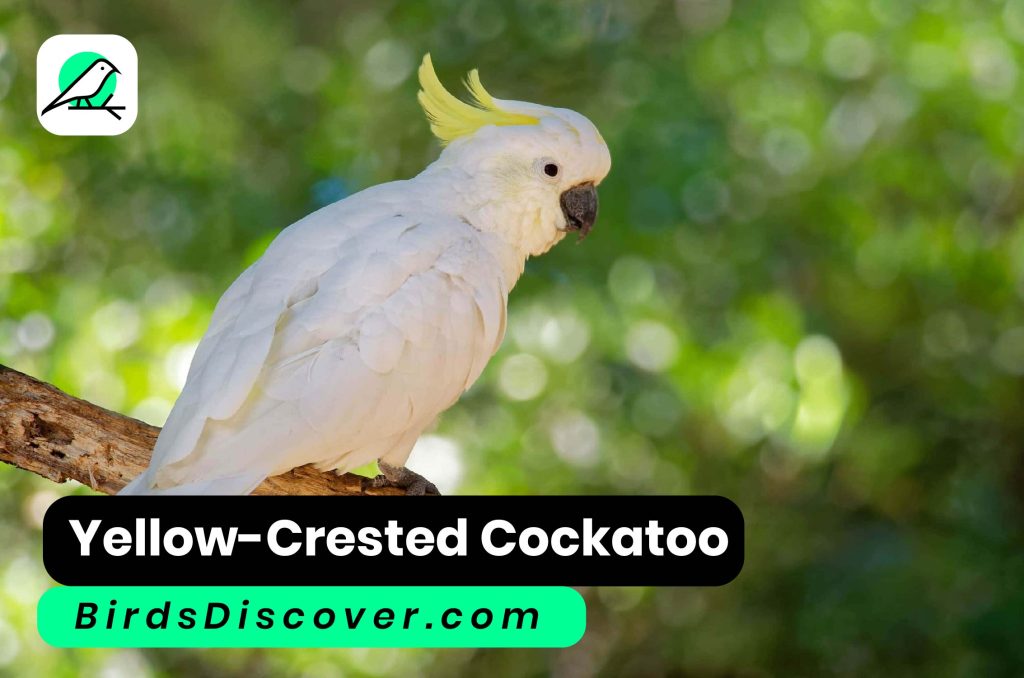
Yellow-Crested Cockatoo Biography, Sound
| Characteristic | Description |
|---|---|
| Scientific Name | Cacatua sulphurea |
| Common Name | Yellow-crested Cockatoo |
| Distribution | Native to Indonesia and East Timor; historically found on islands such as Sulawesi, Sumba, and others in the Lesser Sundas |
| Size | Medium-sized cockatoo, typically around 35-40 cm (14-16 inches) in length |
| Plumage | Predominantly white plumage with a distinctive yellow crest on the head; pinkish skin patches on cheeks and around the eyes during breeding season |
| Habitat | Tropical forests, coastal mangroves, and forest edges |
| Feeding Habits | Omnivorous diet consisting of seeds, nuts, fruits, berries, and occasionally insects; forages in trees and on the ground |
| Behavior | Social birds often seen in pairs or small groups; communicate through loud calls and screeches |
| Breeding | Forms monogamous pairs; nests in tree cavities or hollows, lining the nest with wood chips and leaves; females typically lay 2-3 eggs |
| Conservation Status | Endangered due to habitat loss from deforestation, illegal pet trade, and hunting; listed on Appendix I of CITES (Convention on International Trade in Endangered Species) |
| Threats | Habitat destruction, fragmentation, and degradation; illegal trapping for the pet trade; climate change affecting nesting sites and food availability |
| Conservation Efforts | Conservation efforts focus on protecting remaining forest habitats, enforcing wildlife trade regulations, captive breeding programs, and raising public awareness |
Tanimbar Corella
The Tanimbar Corella (Cacatua goffiniana) is a small, endemic cockatoo species native to the Tanimbar Islands of Indonesia. Recognized for its gentle demeanor and playful personality, it is highly regarded among bird enthusiasts and conservationists alike. This cockatoo is predominantly white with a blush of salmon-pink on its breast and underwings, and it sports a distinctive, pale blue eye-ring. Known for its intelligence, Tanimbar Corellas are adept at problem-solving and mimicry, often engaging in complex social interactions within their flocks. They primarily feed on seeds, fruits, and nuts found in their forested island habitat, where they nest in tree hollows and cavities. Despite their popularity in the pet trade, they face threats from habitat loss due to logging and agriculture, as well as capture for the illegal wildlife trade. Conservation efforts focus on protecting their habitat and enforcing regulations against wildlife trafficking to ensure the survival of this charming species in the wild.
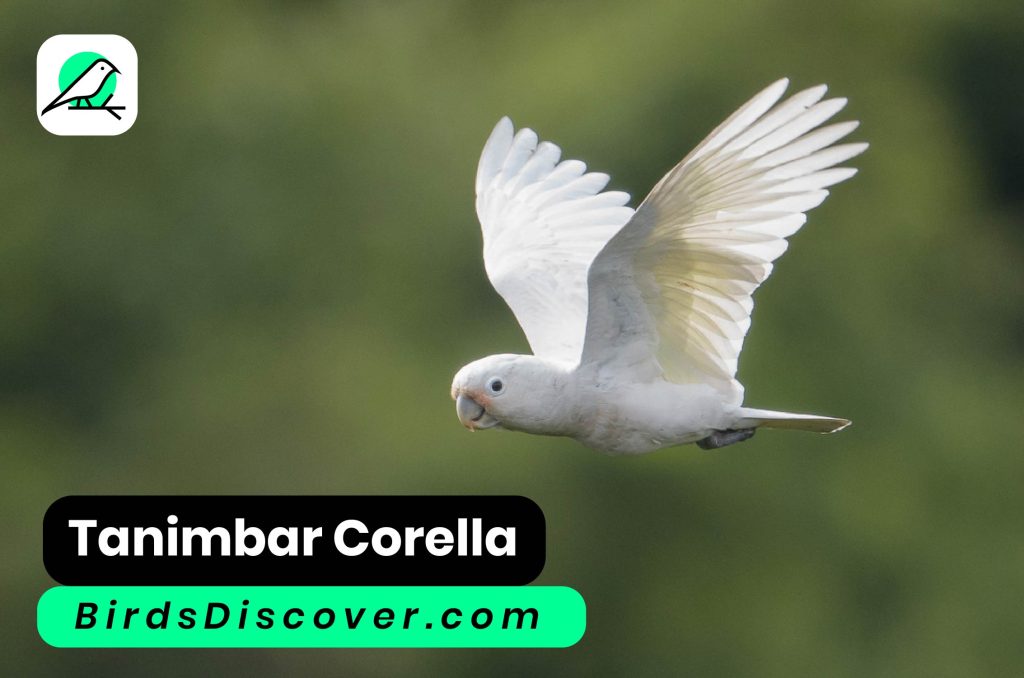
Tanimbar Corella Biography, Sound
| Characteristic | Description |
|---|---|
| Scientific Name | Cacatua goffiniana |
| Common Name | Tanimbar Corella |
| Distribution | Endemic to the Tanimbar Islands in Indonesia; specifically found on Yamdena and Larat islands |
| Size | Small to medium-sized cockatoo, typically around 30-32 cm (12-13 inches) in length |
| Plumage | Predominantly white with a pinkish blush on the breast and underwings; distinctive pale blue eye-ring |
| Habitat | Forested areas, including primary and secondary forests; also found in agricultural areas and near human settlements |
| Feeding Habits | Omnivorous diet consisting of seeds, fruits, nuts, berries, and occasionally insects and larvae; forages in trees and on the ground |
| Behavior | Social birds often seen in flocks, engaging in playful behaviors and complex social interactions; known for intelligence, problem-solving skills, and mimicry |
| Breeding | Nests in tree hollows and cavities, where females typically lay 2-3 eggs; both parents participate in incubation and chick-rearing |
| Conservation Status | Vulnerable due to habitat loss from logging, agriculture, and urbanization; also threatened by illegal capture for the pet trade |
| Threats | Habitat destruction and fragmentation, illegal wildlife trade, and potentially climate change affecting forest ecosystems and food availability |
| Conservation Efforts | Conservation efforts focus on protecting remaining forest habitats, promoting sustainable land use practices, enforcing wildlife trade regulations, and raising awareness |
Black-Faced Spoonbill
The Black-faced Spoonbill (Platalea minor) is a striking waterbird known for its distinctive appearance and endangered status. Found primarily in East Asia, particularly in countries like China, South Korea, and Japan, these spoonbills are characterized by their striking black facial markings, which contrast sharply against their white plumage. Their most distinctive feature, however, is their spoon-shaped bill, which they use to sweep through shallow waters in search of crustaceans, fish, and mollusks. Black-faced Spoonbills prefer coastal habitats such as mudflats, estuaries, and wetlands, where they feed and nest communally. Despite conservation efforts, they face significant threats from habitat loss due to coastal development, pollution, and disturbance of nesting sites. Efforts to protect their habitats and monitor their populations are critical for ensuring the survival of this iconic species, highlighting the importance of international cooperation in conservation initiatives across its range.
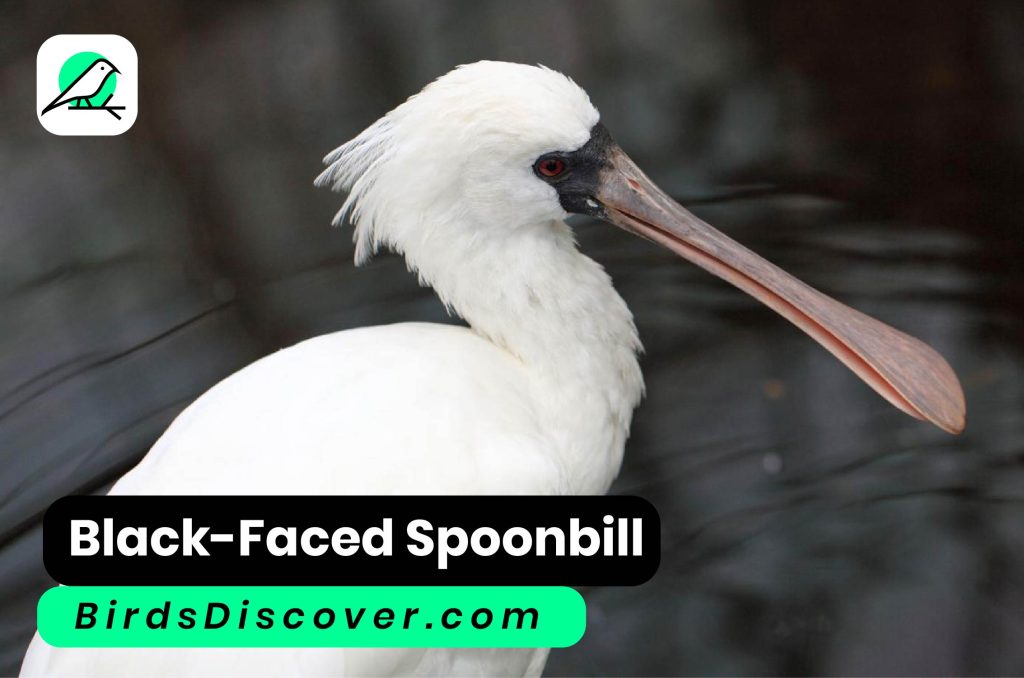
Black-Faced Spoonbill Biography
| Characteristic | Description |
|---|---|
| Scientific Name | Platalea minor |
| Common Name | Black-faced Spoonbill |
| Distribution | Found primarily in East Asia, including coastal areas of China, South Korea, Japan, and Taiwan; migrates to Southeast Asia and occasionally to the Philippines |
| Size | Medium-sized waterbird, typically around 75-85 cm (30-33 inches) in length |
| Plumage | White plumage with a distinct black face and bill; legs and feet are black |
| Bill | Long, spoon-shaped bill adapted for feeding in shallow water; used to sweep side to side to catch crustaceans, fish, and mollusks |
| Habitat | Coastal mudflats, estuaries, mangroves, tidal flats, and wetlands; occasionally seen inland near freshwater habitats |
| Feeding Habits | Carnivorous diet consisting mainly of crustaceans, fish, mollusks, and occasionally insects and plant material; feeds by wading and sweeping its bill through water |
| Behavior | Often seen feeding and nesting in mixed-species colonies; migrates seasonally between breeding and wintering grounds |
| Breeding | Nests in trees or on the ground in colonies, typically in secluded areas; lays 2-4 eggs in a shallow nest lined with twigs and vegetation |
| Conservation Status | Endangered due to habitat loss from coastal development, pollution, and disturbance; protected under international agreements like Ramsar and CITES |
| Threats | Habitat destruction, pollution of coastal habitats, disturbance of nesting sites, and climate change affecting food availability and migration patterns |
| Conservation Efforts | Conservation efforts focus on protecting and restoring coastal habitats, monitoring populations and nesting sites, enforcing wildlife protection laws, and raising public awareness |
Yellow-Billed Spoonbill
The Yellow-billed Spoonbill (Platalea flavipes) is a graceful wading bird native to Australia, New Zealand, and Papua New Guinea. Known for its elegant appearance, it features a striking yellow bill that contrasts with its white plumage. This spoon-shaped bill is its primary tool for feeding, used to sweep through shallow water to catch fish, crustaceans, and insects. Yellow-billed Spoonbills prefer wetland habitats such as rivers, lakes, estuaries, and coastal mudflats, where they are often observed wading slowly or standing motionless as they hunt. They are social birds, sometimes seen in small groups or pairs during the breeding season. Conservation efforts for the Yellow-billed Spoonbill focus on preserving and restoring their wetland habitats, as these areas are increasingly threatened by human activities such as drainage, pollution, and habitat destruction. Monitoring populations and enforcing protective measures are essential to ensure the long-term survival of this charismatic species in its natural environment.
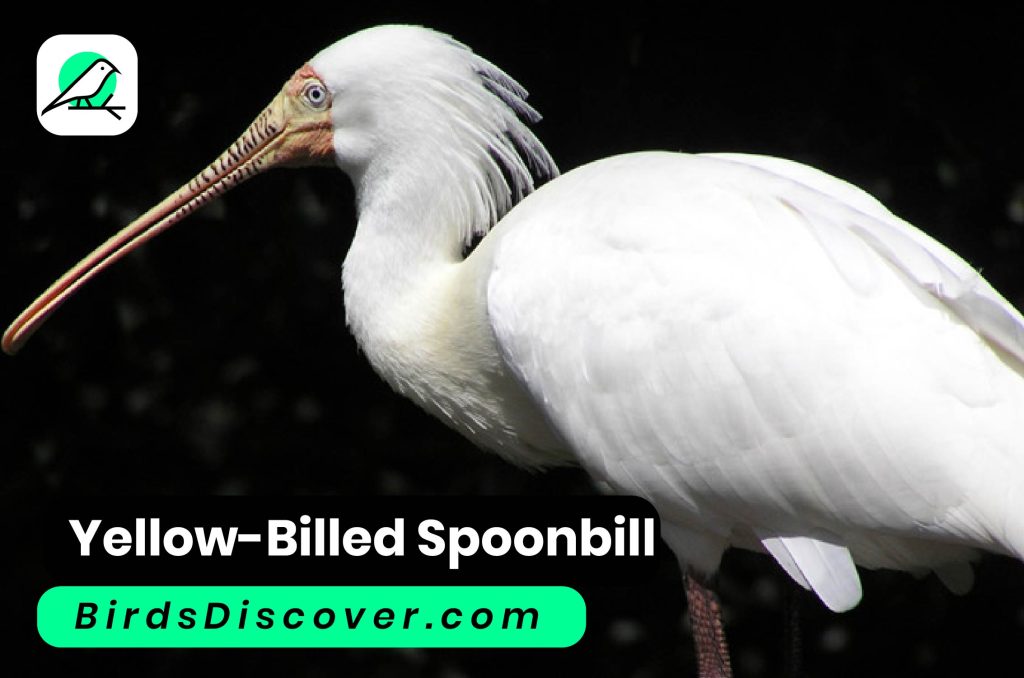
Yellow-Billed Spoonbill Biography, Sound
| Characteristic | Description |
|---|---|
| Scientific Name | Platalea flavipes |
| Common Name | Yellow-billed Spoonbill |
| Distribution | Native to Australia, parts of New Zealand, and Papua New Guinea; found in wetlands, rivers, lakes, estuaries, and coastal mudflats |
| Size | Medium-sized wading bird, typically around 80-90 cm (31-35 inches) in length |
| Plumage | White plumage with a yellow spoon-shaped bill; legs and feet are black |
| Habitat | Prefers wetland habitats including freshwater and saltwater marshes, swamps, and coastal mudflats |
| Feeding Habits | Primarily carnivorous, feeding on fish, crustaceans, insects, and occasionally plants and small invertebrates; feeds by sweeping its bill through shallow water |
| Behavior | Solitary or seen in small groups; known for wading slowly and standing motionless while hunting |
| Breeding | Nests in trees or on the ground near water, in colonies or isolated pairs; builds shallow nests lined with twigs and vegetation |
| Conservation Status | Generally stable population; faces threats from habitat loss due to drainage, pollution, and habitat degradation; protected under national and international laws |
| Threats | Habitat destruction from agriculture, urbanization, and drainage; pollution of wetland habitats; disturbance from human activities |
| Conservation Efforts | Focuses on habitat conservation and restoration, monitoring populations, enforcing protective laws, and raising public awareness |
Jabiru
The Jabiru (Jabiru mycteria) is a majestic stork native to the Americas, particularly found in wetlands and freshwater habitats from Mexico down to Argentina. Recognized for its impressive size, standing up to 1.5 meters tall with a wingspan of over 2.5 meters, the Jabiru is distinguished by its white plumage, black neck and head, and a distinctive red throat patch. This striking bird is primarily carnivorous, feeding on fish, amphibians, reptiles, and small mammals, often spotted foraging in shallow waters or perched near rivers and lakes. Known for its impressive courtship displays that include bill-clattering and wing-flapping, the Jabiru forms monogamous pairs during the breeding season, constructing large stick nests atop tall trees or bushes. Despite being protected by law across much of its range, the Jabiru faces threats from habitat loss due to agricultural expansion and wetland degradation, highlighting the importance of conservation efforts to preserve its habitats and ensure its continued presence in the region.
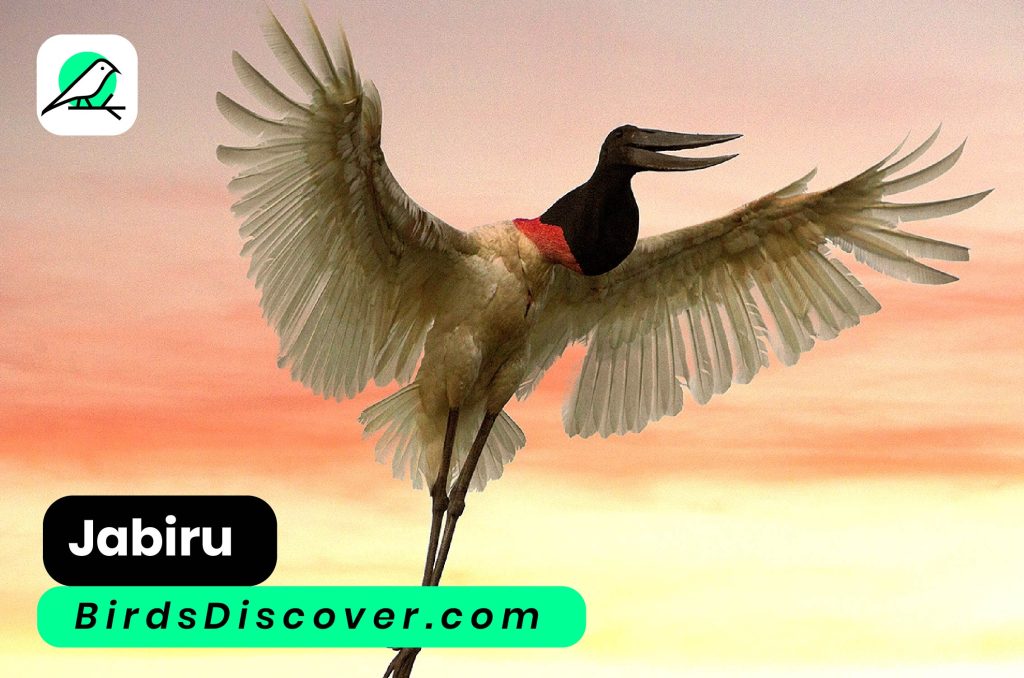
Jabiru Biography
| Characteristic | Description |
|---|---|
| Scientific Name | Jabiru mycteria |
| Common Name | Jabiru |
| Distribution | Found in wetlands and freshwater habitats throughout the Americas, from Mexico to Argentina |
| Size | Large stork, standing up to 1.5 meters (5 feet) tall with a wingspan of over 2.5 meters (8 feet) |
| Plumage | Predominantly white with a black neck and head; distinct red throat patch |
| Habitat | Prefers wetlands, rivers, lakes, marshes, and floodplains; occasionally seen in grasslands and savannas |
| Feeding Habits | Carnivorous diet primarily consisting of fish, amphibians, reptiles, small mammals, and occasionally insects; forages in shallow water |
| Behavior | Often seen foraging alone or in small groups; performs elaborate courtship displays involving bill-clattering and wing-flapping |
| Breeding | Forms monogamous pairs during the breeding season; constructs large stick nests atop tall trees or bushes near water bodies |
| Conservation Status | Generally stable population; protected by law in many countries across its range; faces threats from habitat loss due to agriculture and wetland degradation |
| Threats | Habitat destruction and fragmentation, particularly from agricultural expansion and urban development; disturbance of nesting sites |
| Conservation Efforts | Conservation efforts focus on preserving and restoring wetland habitats, enforcing legal protections, monitoring populations, and raising awareness |
Greater Flamingo
The Greater Flamingo (Phoenicopterus roseus) is a magnificent and iconic bird known for its vibrant pink plumage and distinctive long, curved neck. Found in diverse habitats ranging from coastal mudflats and salt pans to inland lakes and estuaries across Africa, Southern Europe, Asia, and parts of the Americas, these flamingos are renowned for their striking appearance and social behavior. They are the largest species of flamingo, standing up to 150 cm tall with a wingspan of around 140-165 cm. Greater Flamingos are primarily filter-feeders, using their specialized bills to filter algae, small invertebrates, and plankton from the water. They often gather in large flocks, engaging in synchronized feeding and elaborate courtship displays involving head-flagging and wing-saluting. Despite being relatively widespread, they face threats from habitat loss, pollution, and disturbance in their breeding and foraging sites. Conservation efforts focus on protecting key habitats, monitoring populations, and raising awareness about the importance of safeguarding these charismatic birds and their ecosystems.
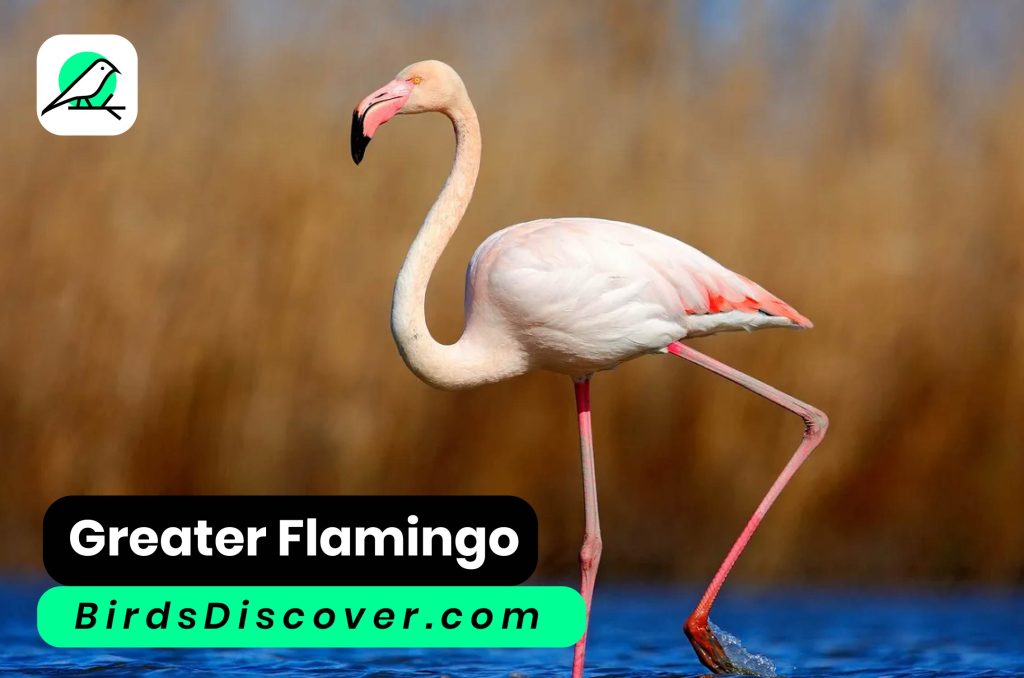
Greater Flamingo Biography, Sound
| Characteristic | Description |
|---|---|
| Scientific Name | Phoenicopterus roseus |
| Common Name | Greater Flamingo |
| Distribution | Found in diverse habitats including coastal mudflats, salt pans, inland lakes, and estuaries across Africa, Southern Europe, Asia, and parts of the Americas |
| Size | Largest species of flamingo, typically standing 120-150 cm (47-59 inches) tall with a wingspan of 140-165 cm (55-65 inches) |
| Plumage | Characterized by vibrant pink feathers, with black-tipped wings and a curved, downward-bending bill |
| Habitat | Prefers saline or alkaline lakes, estuaries, lagoons, and coastal marshes; also found in freshwater habitats during breeding season |
| Feeding Habits | Filter-feeder, feeding on algae, small invertebrates, and plankton by sweeping its bill upside-down through water to filter food particles |
| Behavior | Social birds often seen in large flocks; engage in synchronized feeding and elaborate courtship displays involving head-flagging and wing-saluting |
| Breeding | Builds cone-shaped mud nests on islands or mudflats in shallow water; forms monogamous pairs during breeding season |
| Conservation Status | Generally stable population; faces threats from habitat loss due to coastal development, pollution, and disturbance in breeding and foraging areas |
| Threats | Habitat destruction and alteration, disturbance by human activities, pollution of feeding and breeding sites, and climate change affecting habitat suitability |
| Conservation Efforts | Conservation efforts focus on protecting key habitats, including designating protected areas, restoring wetlands, monitoring populations, and promoting sustainable practices |
ROYAL TERN
The Royal Tern (Thalasseus maximus) is a striking seabird known for its elegant appearance and distinctive black crest during breeding season. Found along coastlines and estuaries of the Americas, from the southern United States to South America, these terns are medium to large in size, typically measuring around 45-50 cm (18-20 inches) in length. They are characterized by their silver-gray plumage, forked tail, and bright orange bill with a black tip. Royal Terns are highly social birds, often observed in large flocks that dive and plunge into the water to catch fish. They prefer sandy beaches and sandbars for nesting, where they lay their eggs in shallow scrapes lined with vegetation. Despite their adaptability to coastal environments, Royal Terns face threats from habitat loss due to coastal development, disturbance during nesting, and climate change impacting their feeding grounds. Conservation efforts focus on protecting nesting sites, managing coastal habitats, and monitoring populations to ensure their continued presence and survival along the shores of the Americas.
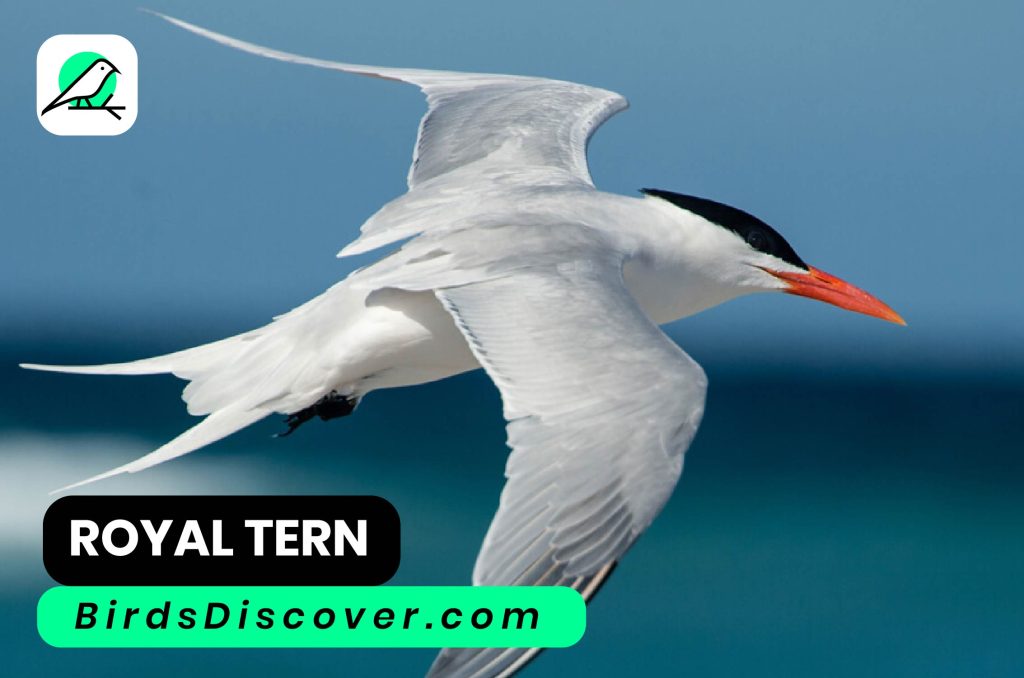
ROYAL TERN Biography, Sound
| Characteristic | Description |
|---|---|
| Scientific Name | Thalasseus maximus |
| Common Name | Royal Tern |
| Distribution | Found along the coastlines and estuaries of the Americas, from the southern United States to South America |
| Size | Medium to large seabird, typically 45-50 cm (18-20 inches) in length |
| Plumage | Silver-gray overall with a white underside; black cap on the head during breeding season; long forked tail |
| Bill | Bright orange bill with a black tip |
| Habitat | Prefers coastal habitats including sandy beaches, sandbars, mudflats, and estuaries |
| Feeding Habits | Carnivorous diet primarily consisting of fish, crustaceans, and marine invertebrates; catches prey by plunge-diving into the water |
| Behavior | Highly social birds often seen in large flocks; nests in colonies on open sandy or gravel beaches, sometimes forming mixed-species colonies |
| Breeding | Forms monogamous pairs during breeding season; nests in shallow scrapes on the ground lined with shells, pebbles, or vegetation |
| Conservation Status | Generally stable population; faces threats from habitat loss due to coastal development, disturbance during nesting, and climate change |
| Threats | Habitat destruction and alteration from coastal development; disturbance during nesting; pollution of marine habitats; climate change impacts on food availability |
| Conservation Efforts | Conservation efforts focus on protecting nesting sites, managing coastal habitats, monitoring populations, and raising public awareness |
Elegant Tern
The Elegant Tern (Thalasseus elegans) is a graceful seabird distinguished by its slender body, long pointed wings, and deeply forked tail. Found along the Pacific coasts of North and South America, from California to Chile, these terns are renowned for their striking appearance during the breeding season. They exhibit a white body with a black cap, a sharp orange bill, and delicate black markings on their wings. Elegant Terns are highly social, often nesting in large colonies on coastal islands or sandy beaches. They feed primarily on small fish, which they catch by plunge-diving into the water from heights as high as 15 meters (50 feet). Despite their adaptability to coastal environments, Elegant Terns face threats from habitat loss due to coastal development, disturbance during nesting, and climate change affecting fish populations. Conservation efforts focus on protecting nesting sites, managing coastal habitats, and monitoring populations to ensure the continued survival of these elegant seabirds along the Pacific shores.
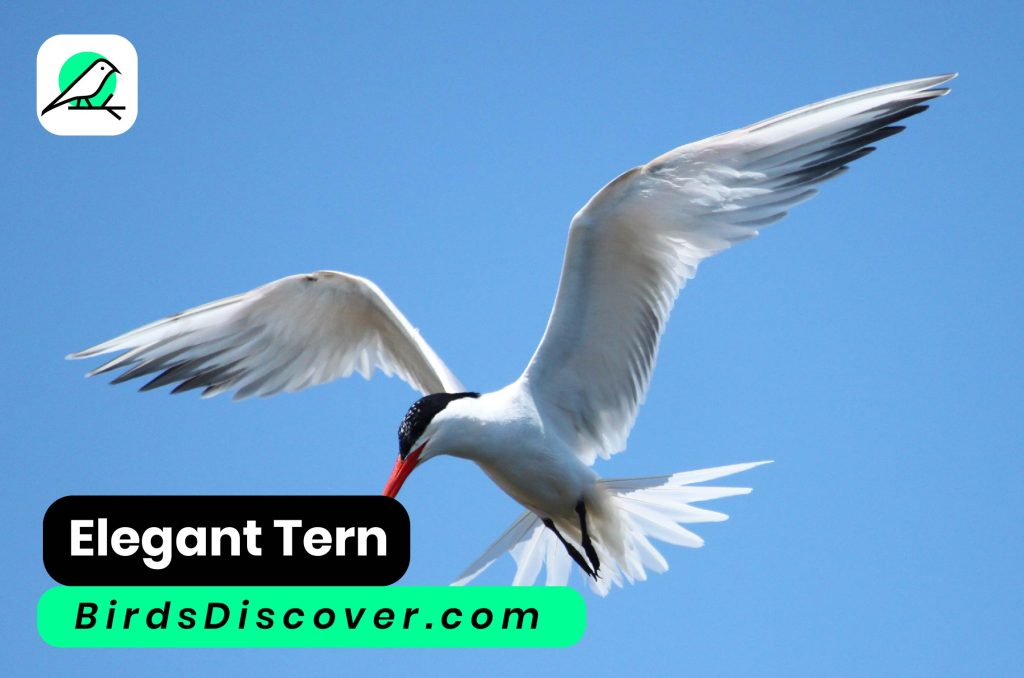
Elegant Tern Biography, Sound
| Characteristic | Description |
|---|---|
| Scientific Name | Thalasseus elegans |
| Common Name | Elegant Tern |
| Distribution | Found along the Pacific coasts of North and South America, from California to Chile |
| Size | Medium-sized tern, typically 32-35 cm (12.5-14 inches) in length |
| Plumage | White overall with a black cap during breeding season; long, slender wings and deeply forked tail |
| Bill | Sharp, slender orange bill with black tip |
| Habitat | Prefers coastal habitats including sandy beaches, coastal islands, and estuaries |
| Feeding Habits | Carnivorous diet primarily consisting of small fish, which they catch by plunge-diving from heights up to 15 meters (50 feet) |
| Behavior | Highly social birds often seen in large colonies for breeding and nesting; engage in synchronized fishing and aerial displays |
| Breeding | Forms colonies on coastal islands or sandy beaches; nests on the ground in shallow depressions lined with vegetation or shells |
| Conservation Status | Generally stable population; faces threats from habitat loss due to coastal development, disturbance during nesting, and climate change impacts |
| Threats | Habitat destruction and alteration from coastal development; disturbance during nesting; pollution of marine habitats; climate change affecting prey availability |
| Conservation Efforts | Conservation efforts focus on protecting nesting sites, managing coastal habitats, monitoring populations, and raising awareness about threats and conservation |
Forster’s Tern
Forster’s Tern (Sterna forsteri) is a slender and agile seabird found in North America, particularly along the Atlantic and Gulf coasts, as well as inland freshwater habitats such as marshes and lakes. Known for its sleek body, deeply forked tail, and black cap during breeding season, Forster’s Tern exhibits a white body and a pointed orange bill. These terns are adept flyers and divers, using their keen eyesight to spot fish from above before plunging headfirst into the water to catch prey. They are highly social birds, often seen in small to large flocks, particularly during migration and breeding seasons. Nesting occurs in colonies on marsh islands or isolated patches of vegetation, where they lay eggs in shallow depressions lined with vegetation or debris. While generally resilient, Forster’s Terns face threats from habitat loss due to wetland degradation, pollution, and disturbance during nesting. Conservation efforts focus on protecting nesting sites, managing wetland habitats, and monitoring populations to ensure their continued survival.

Forster’s Tern Biography, Sound
| Characteristic | Description |
|---|---|
| Scientific Name | Sterna forsteri |
| Common Name | Forster’s Tern |
| Distribution | Found in North America, along the Atlantic and Gulf coasts, as well as inland freshwater habitats such as marshes, lakes, and rivers |
| Size | Medium-sized tern, typically 30-34 cm (12-13 inches) in length |
| Plumage | White overall with a black cap during breeding season; long, slender wings and deeply forked tail |
| Bill | Pointed orange bill with a black tip |
| Habitat | Prefers coastal marshes, estuaries, lakes, and rivers during breeding season; migrates along coastlines and over inland waters during migration |
| Feeding Habits | Carnivorous diet primarily consisting of small fish, crustaceans, and insects; catches prey by plunge-diving from flight or hovering over water |
| Behavior | Highly social birds often seen in small to large flocks, particularly during migration and breeding seasons; agile flyers and divers |
| Breeding | Nests in colonies on marsh islands or isolated patches of vegetation; constructs nests in shallow depressions lined with grass, leaves, or debris |
| Conservation Status | Generally stable population; faces threats from habitat loss due to wetland degradation, pollution, and disturbance during nesting |
| Threats | Habitat destruction and alteration from coastal development; pollution of waterways and wetlands; disturbance by human activities and predators |
| Conservation Efforts | Conservation efforts focus on protecting nesting sites, managing wetland habitats, restoring degraded areas, monitoring populations, and raising public awareness |
Masked Booby
The Masked Booby (Sula dactylatra) is a large seabird known for its striking appearance and impressive aerial prowess. Found in tropical and subtropical oceans worldwide, including the Caribbean, Pacific, and Indian Oceans, these boobies exhibit distinct white plumage with black markings on their wings and face, and a pale yellow bill. They are proficient fish hunters, diving from heights of up to 30 meters (100 feet) to catch fish and squid near the ocean’s surface. Masked Boobies nest in colonies on remote islands or coastal cliffs, laying a single egg in a shallow depression lined with debris. They are highly adapted for life at sea, spending much of their time flying and foraging over vast oceanic expanses. Despite their adaptability, they face threats from habitat disturbance, especially on nesting islands, and accidental entanglement in fishing gear. Conservation efforts focus on protecting their breeding sites, monitoring populations, and implementing measures to mitigate human impacts on their oceanic habitats.

Masked Booby Biography, Sound
| Characteristic | Description |
|---|---|
| Scientific Name | Sula dactylatra |
| Common Name | Masked Booby |
| Distribution | Found in tropical and subtropical oceans worldwide, including the Caribbean, Pacific, and Indian Oceans |
| Size | Large seabird, typically 70-85 cm (28-33 inches) in length |
| Plumage | Distinctive white plumage with black markings on wings and face; pale yellow bill |
| Habitat | Prefers remote islands, coastal cliffs, and coral atolls for nesting; forages over open ocean waters |
| Feeding Habits | Carnivorous diet primarily consisting of fish, squid, and occasionally crustaceans; catches prey by plunge-diving from heights up to 30 meters (100 feet) |
| Behavior | Solitary or seen in small groups; spends much of its time flying and foraging over the open ocean |
| Breeding | Nests in colonies on the ground or rocky ledges; constructs a shallow nest of debris or vegetation; lays a single egg per breeding season |
| Conservation Status | Generally stable population; faces threats from habitat disturbance on nesting islands and accidental entanglement in fishing gear |
| Threats | Habitat destruction and disturbance on nesting islands; accidental bycatch in fishing gear; pollution of marine habitats |
| Conservation Efforts | Conservation efforts focus on protecting nesting sites on remote islands, monitoring populations, implementing measures to reduce bycatch, and raising public awareness |
Conclusion
In conclusion, “46 Stunning White Birds: Sounds, Biographies, and Pictures” serves as a comprehensive tribute to the ethereal beauty and diverse characteristics of white avian species. Through vivid photography, detailed biographies, and captivating sound recordings, this collection not only celebrates the visual splendor of these birds but also deepens our understanding of their roles in ecosystems around the world. From the elegant swan gliding across serene waters to the majestic snowy owl perched silently in a winter landscape, each species showcased offers a unique glimpse into the avian world. This work invites readers to appreciate the delicate balance and intricate behaviors of white birds, fostering a greater appreciation for their conservation and the natural world they inhabit.
FAQS
1. What types of white birds are featured in the collection?
The collection includes a diverse range of white birds, such as the elegant swan, the snowy owl, the great egret, and the white ibis. Each bird is selected for its distinctive white plumage and unique characteristics, providing a broad overview of different species across various habitats.
2. Are the bird sounds in the collection real recordings?
Yes, the bird sounds included in the collection are real recordings. These audio clips capture the natural calls and vocalizations of each bird, allowing readers to experience the auditory aspect of these species along with their visual and biographical information.
3. How detailed are the biographies of the birds in the collection?
The biographies are quite detailed, offering insights into each bird’s behavior, habitat, diet, and conservation status. They provide a comprehensive look at the lives of these birds, helping readers understand their ecological roles and the challenges they face.
4. Can the pictures in the collection be used for educational purposes?
Yes, the pictures are intended to be used for educational purposes. They are high-quality images that showcase the beauty and details of each bird. If you plan to use the images for educational presentations or materials, it’s best to check the specific licensing or permissions provided with the collection.
5. Is there information on conservation efforts for these birds?
Yes, the collection includes information on conservation efforts related to the birds featured. It highlights any threats they may face, such as habitat loss or climate change, and discusses ongoing conservation initiatives aimed at protecting and preserving these magnificent species.




